Charlie Tawara Tjungurrayi Artworks
The Charlie Tawara Tjungurrayi artwork “The trial 1972” (also known as The Icy Spirit: The Structure of Punishment) is Tawara’s most valuable and recognised artwork.
It is on the cover of the book Six paintings from Papunya a conversation.
It was painted in Papunya in 1972 and sold at auction in 2004 for $180,000. I personally prefer Untitled (Men’s Ceremony), 1972 but both paintings have a great use of negative space
The trial is a visual depiction of a mythological story of a punishing spirit, here represented by a circular figure that is confined by surrounding shapes into a dark center. The use of white dots in the painting is interpreted as combining reference to the “frost” identified with the ancestral being at this place but also drawing on usages of white material in ceremonial body decoration
I specialize in the private treaty sale of early and significant artworks by Charlie Tawara Tjungurrayi. If you have an example that you wish to have appraised please feel free to send me images and dimensions.

Early Experimentation and Innovation in Papunya Painting (1971)
Charlie Tjaruru Tjungurrayi’s earliest works from 1971, created during the genesis of the Western Desert art movement in Papunya, began with monochromatic backgrounds. However, Charlie swiftly embraced the emerging hallmark of the movement—dot fields—using them not only as a background technique but as a method to elevate the visual depth and energy of his compositions. While his fellow Papunya artists like Shorty Lungkarda or Old Mick largely adhered to a traditional ochre palette—red, yellow, white, and black derived from natural pigments—Charlie was an early innovator, mixing these hues to create softer tones like pinks and oranges.

Fear 1971
Synthetic polymer paint and enamel paint on plywood, bears artists name ‘Charlie Jungari’ (sic. ) title and consignment number 3 Con no. 4 on Stuart Art Centre label on reverse of frame,
61 x 20.5 cm
Hammerprice: A$75000
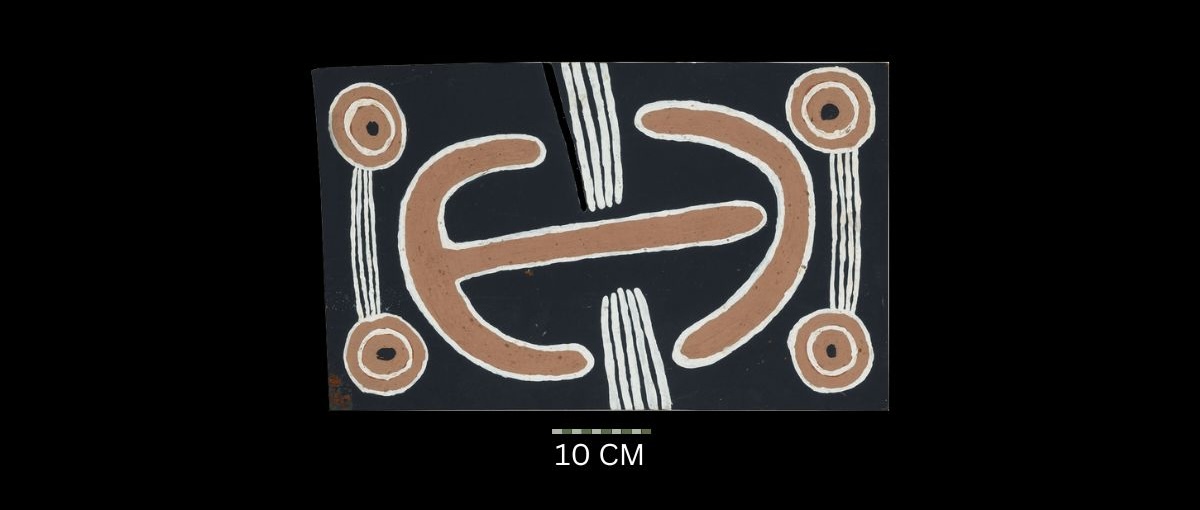
Moon Love Dreaming of Man & Woman – Medicine Story – Version 1 1971
Synthetic polymer paint on composition board, bears Stuart Art Centre label with artist’s name and catalogue number on the reverse,
58.4 x 34.3 cm
Hammerprice: A$50,000
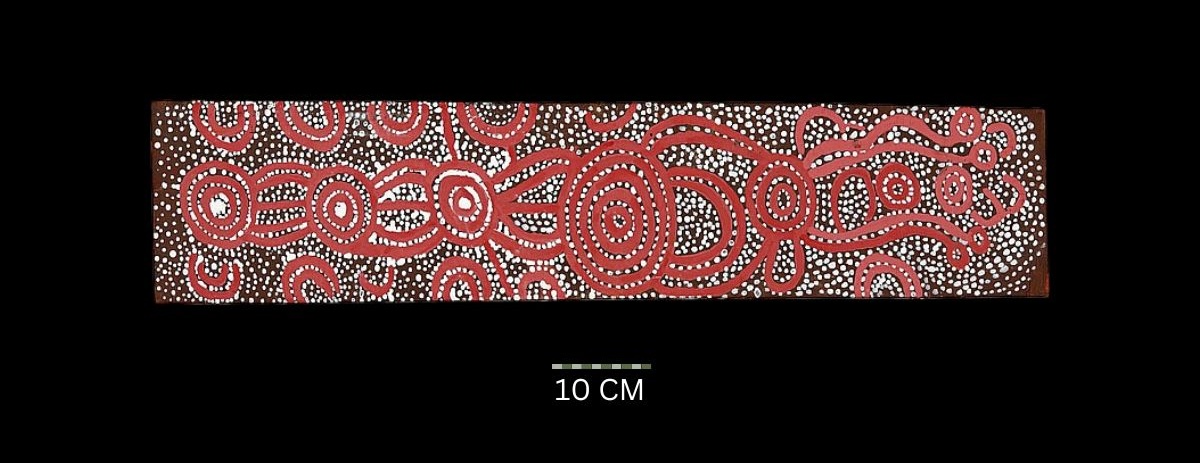
Untitled (Probably Women’s Dreaming) (1971)
Synthetic polymer paint on composition board,
91.4 x 20.3 cm
Hammerprice: A$18,000

Ceremonial Dreaming (1972)
Synthetic polymer paint on composition board,
61 x 45.7 cm
Hammerprice: A$60,000
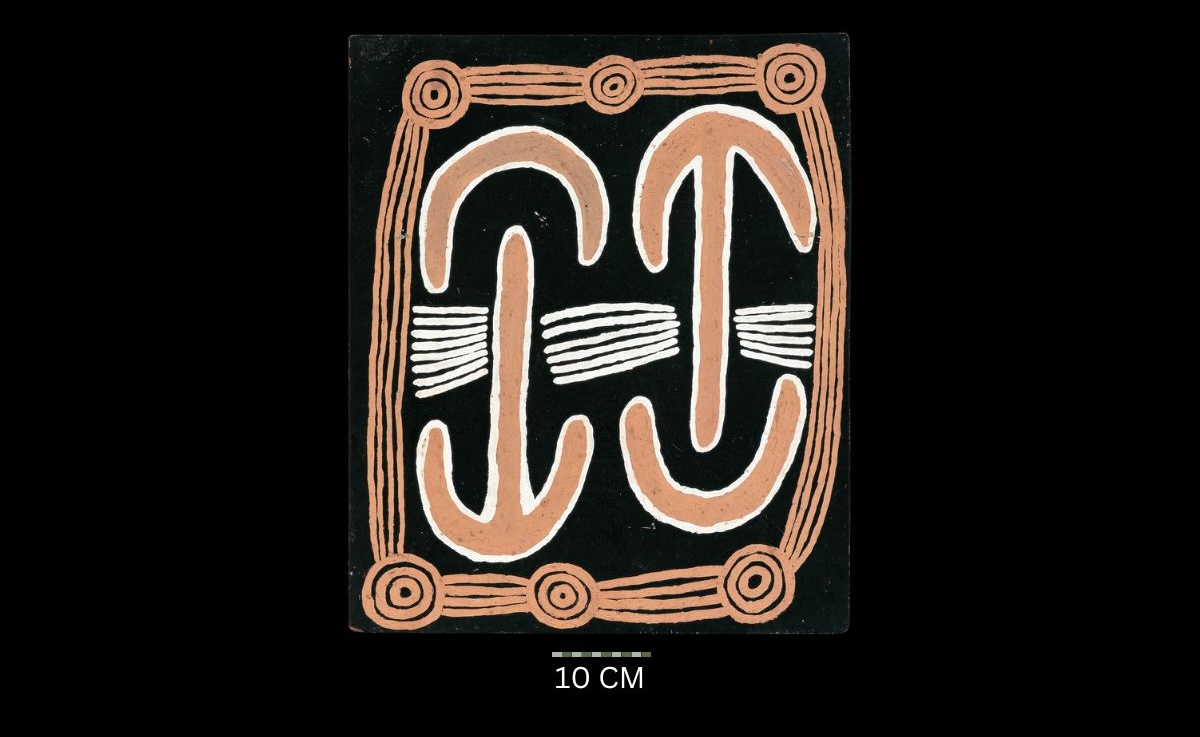
Moon Love Dreaming (Man and Woman) 1971
Synthetic polymer paint on board, inscribed verso, ‘Charlie Jungari’,
60 x 51 cm
Hammerprice: A$60,000
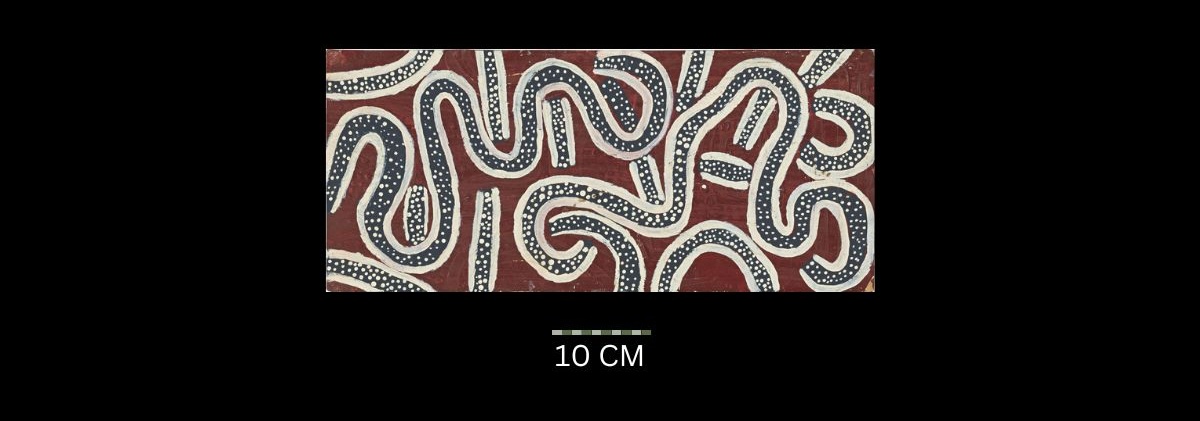
Snake Dreaming, Version 2 1971
Synthetic polymer paint on composition board,
54.6 x 24.1 cm
Hammerprice: A$35,000
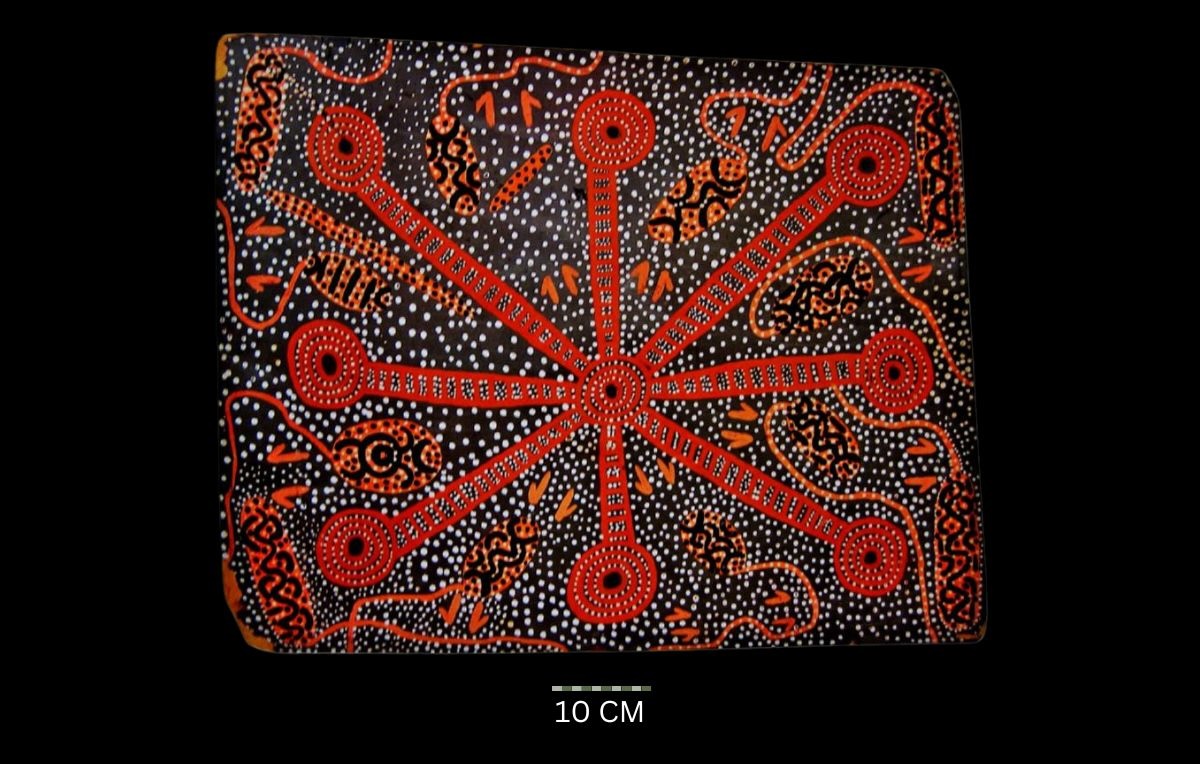
Wallaby Dreaming 1971
Synthetic polymer powder paint on composition board, bears title date Stuart art centre consignment 1971 numbers 7001 chalk mark on back of painting on the reverse (confirm info by taking foam core board off back),
78.5 x 61.5 cm
Hammerprice: A$16,000
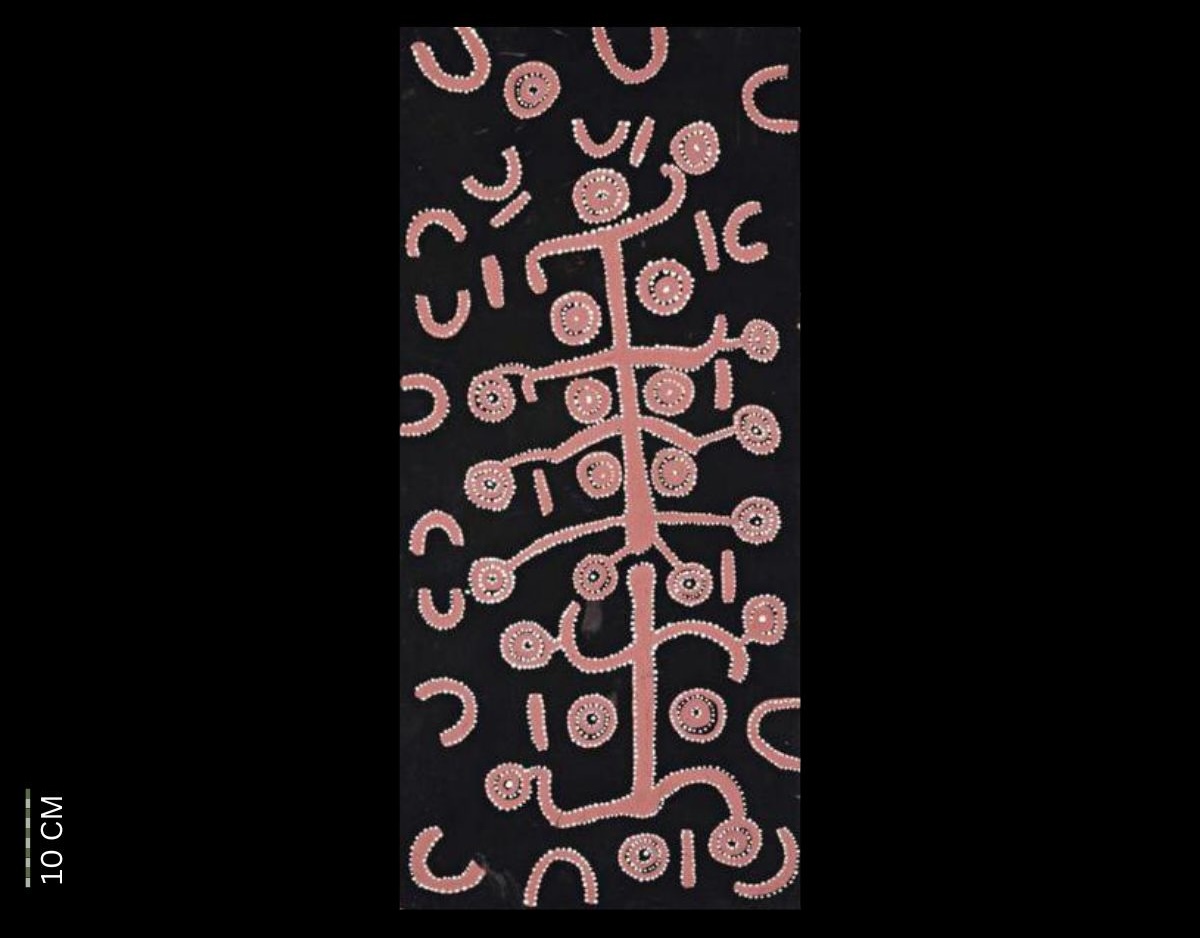
Wild Potato Story 1971
Synthetic polymer powder paint and acrylic on composition board, bears artist’s name ‘Charlie Jungari’ (sic), language group ‘Pintipi’ (sic), title and diagrammatic annotations, in Geoffrey Bardon’s hand on the reverse, and numbered ’10’,
88 x 41 cm
Hammerprice: A$50,000
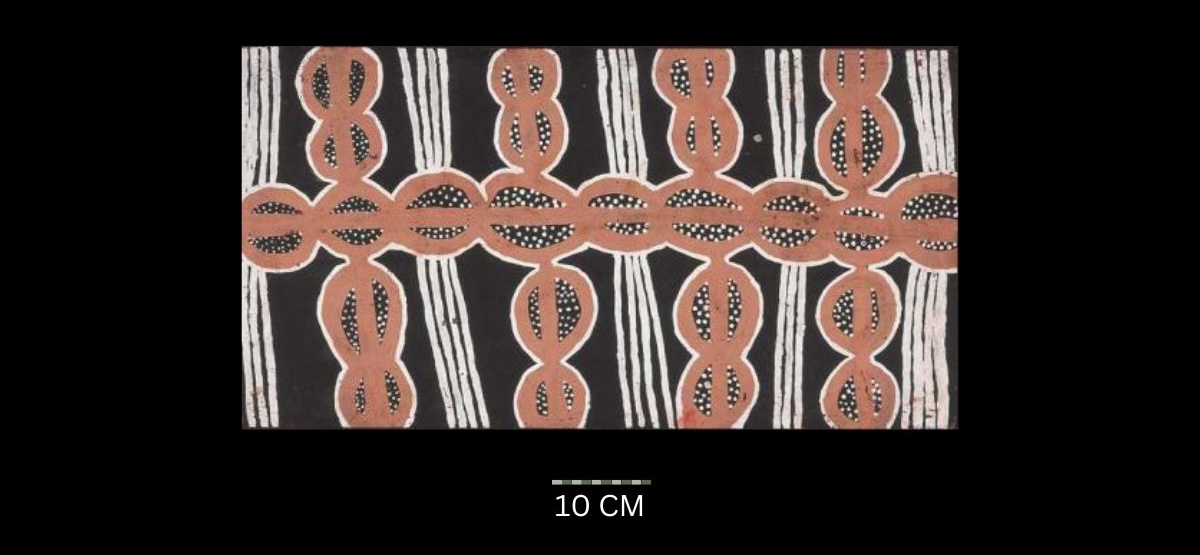
Old Man’s Dreaming 1971
Synthetic polymer paint and natural earth pigments on composition board, bears artist’s name and attached Stuart Art Centre label with date 1971 and consignment number 8041 on the reverse,
71 x 38 cm
UNSOLD
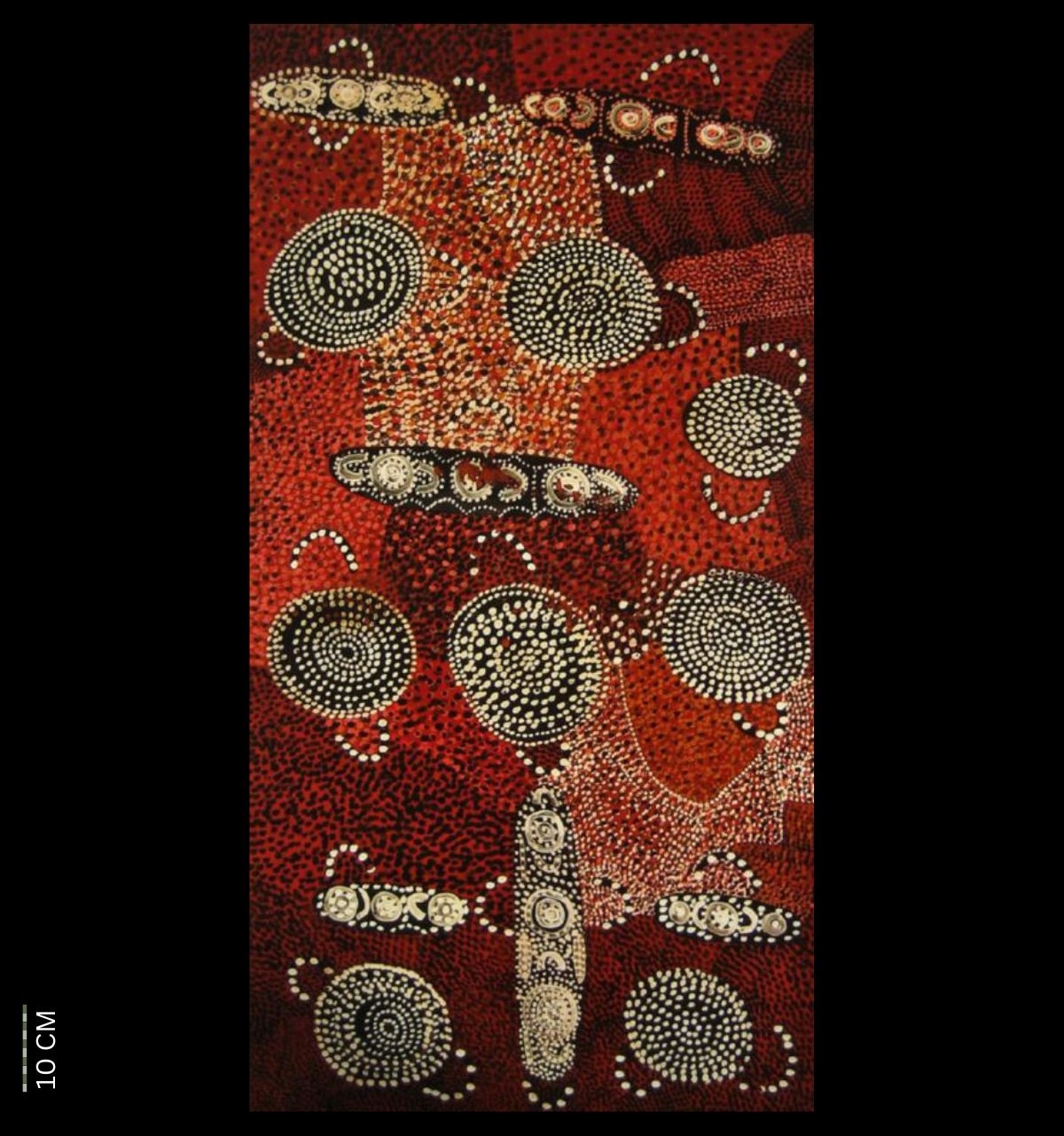
Dreaming at Yawaiangra, Circa 1971
Synthetic polymer paint on plywood shelf,
128 x 26.5 cm
Hammerprice: A$48,000
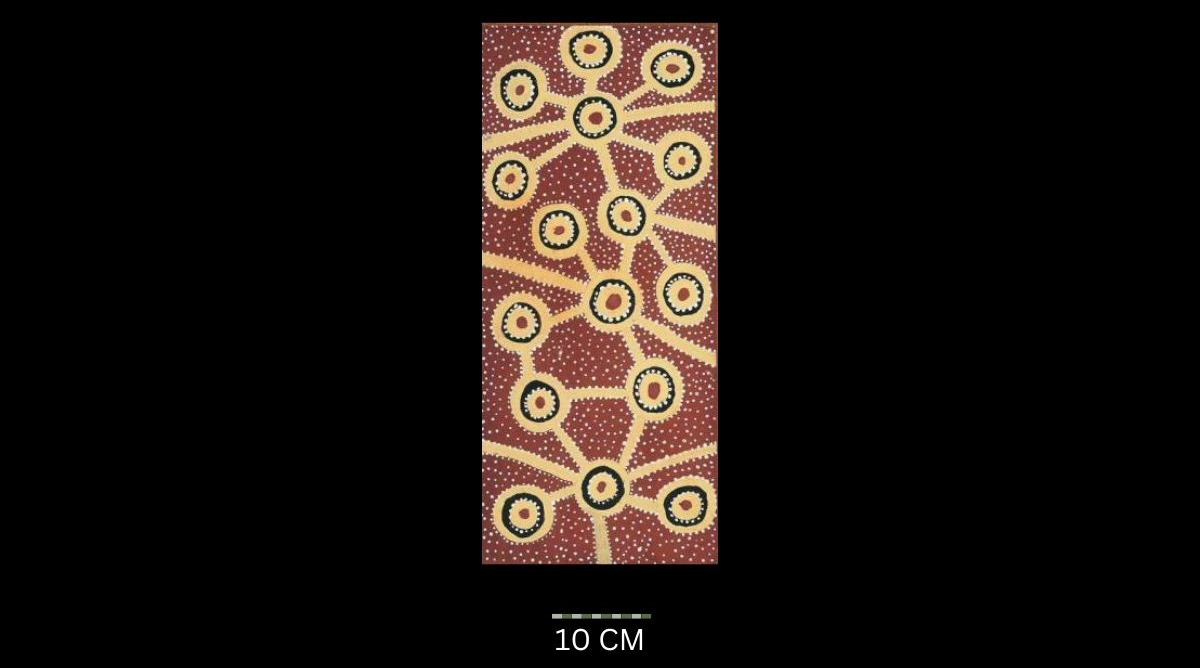
Untitled 1971
Natural earth pigments and synthetic polymer paint on fashion board,
54.5 x 24 cm
UNSOLD
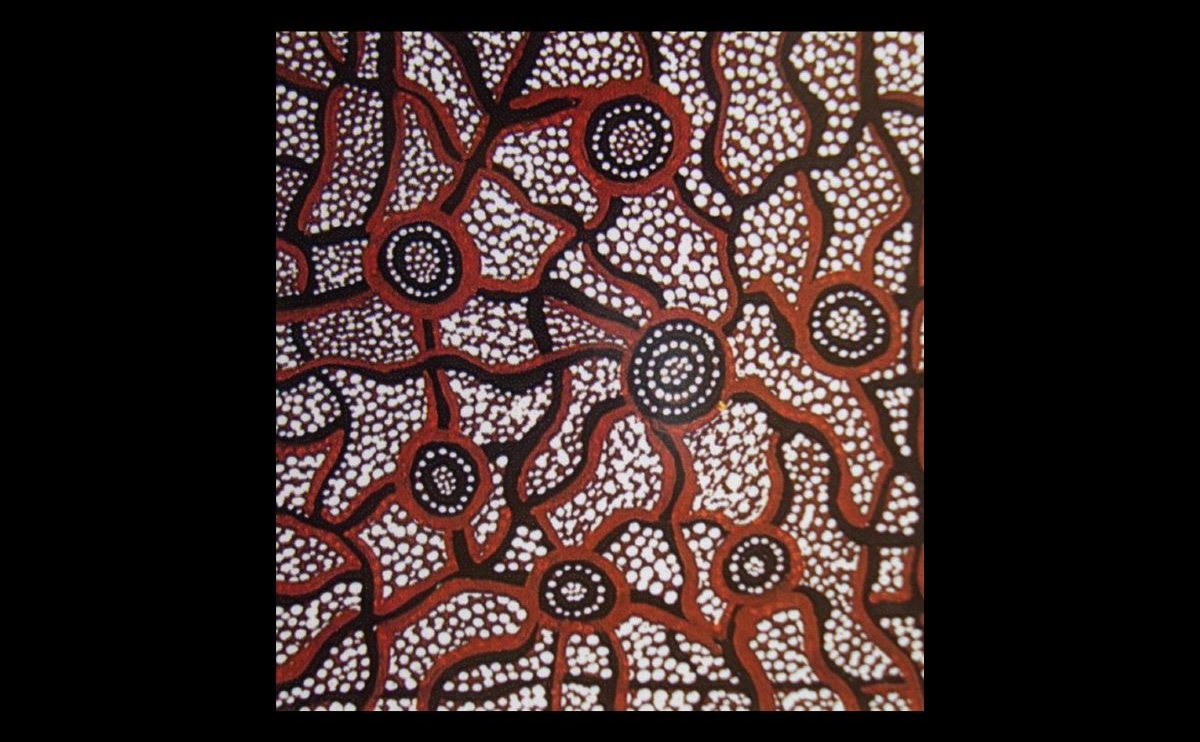
Ice Dreaming 1971
Synthetic polymer on board
Hammerprice: A$2500
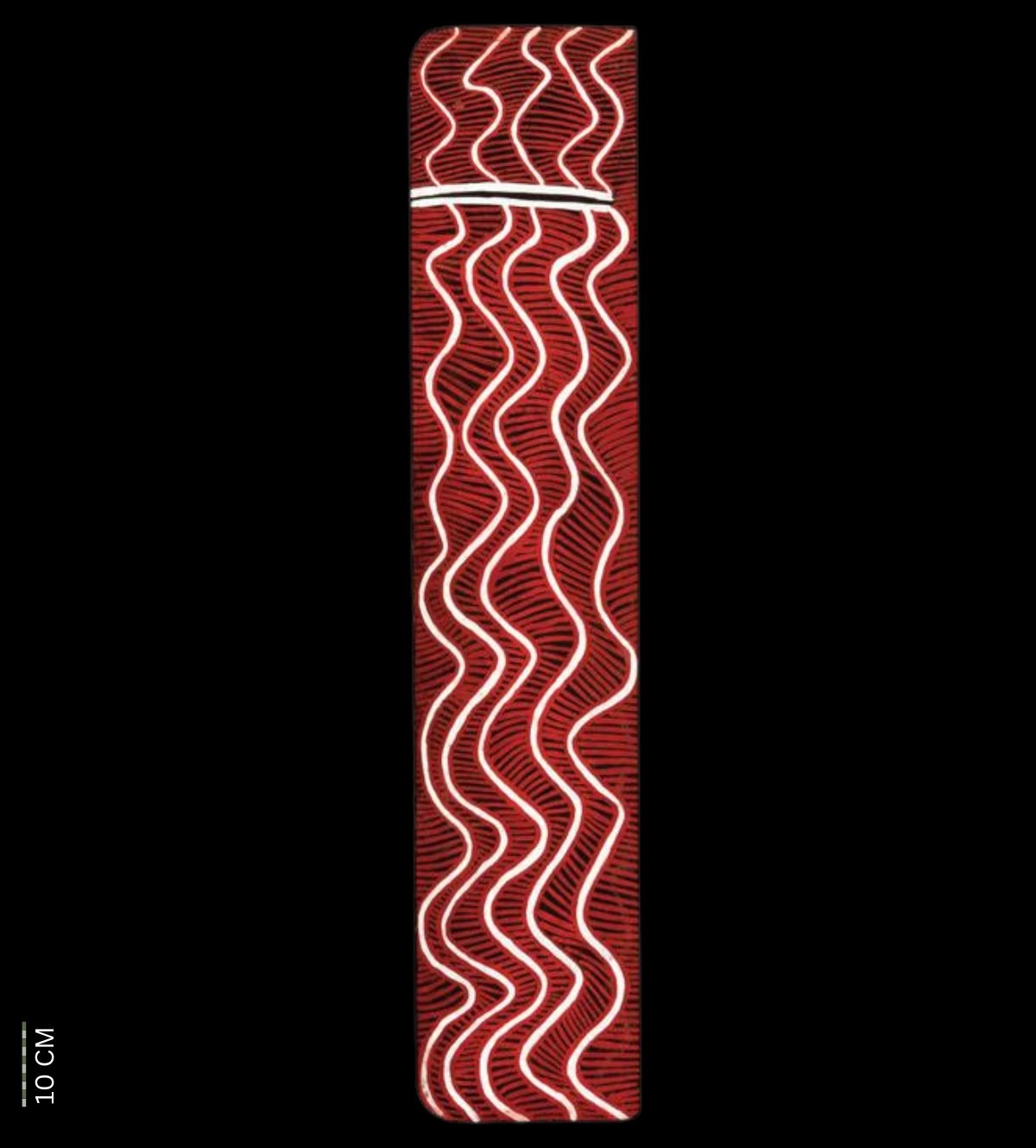
Dreaming at Yawaiangra, Circa 1971
Synthetic polymer paint on plywood shelf,
128 x 26.5 cm
Hammerprice: A$12,000
Minimalist Aboriginal Art and Mastery of Negative Space (1972)
By 1972, Tjungurrayi had matured into a confident painter with a distinctive visual language. Unlike many of his contemporaries, Charlie favored restraint over density, often using only a few key Aboriginal symbols within his compositions. Works such as The Trail and Untitled Men’s Ceremony 1972 demonstrate his sophisticated command of negative space—particularly his preference for black backgrounds—which allowed his dot motifs and traditional iconography to pulse with a unique vibrancy. His minimalist Aboriginal art approach was not merely aesthetic but deeply grounded in cultural storytelling, giving his paintings a rare clarity and three-dimensional presence.
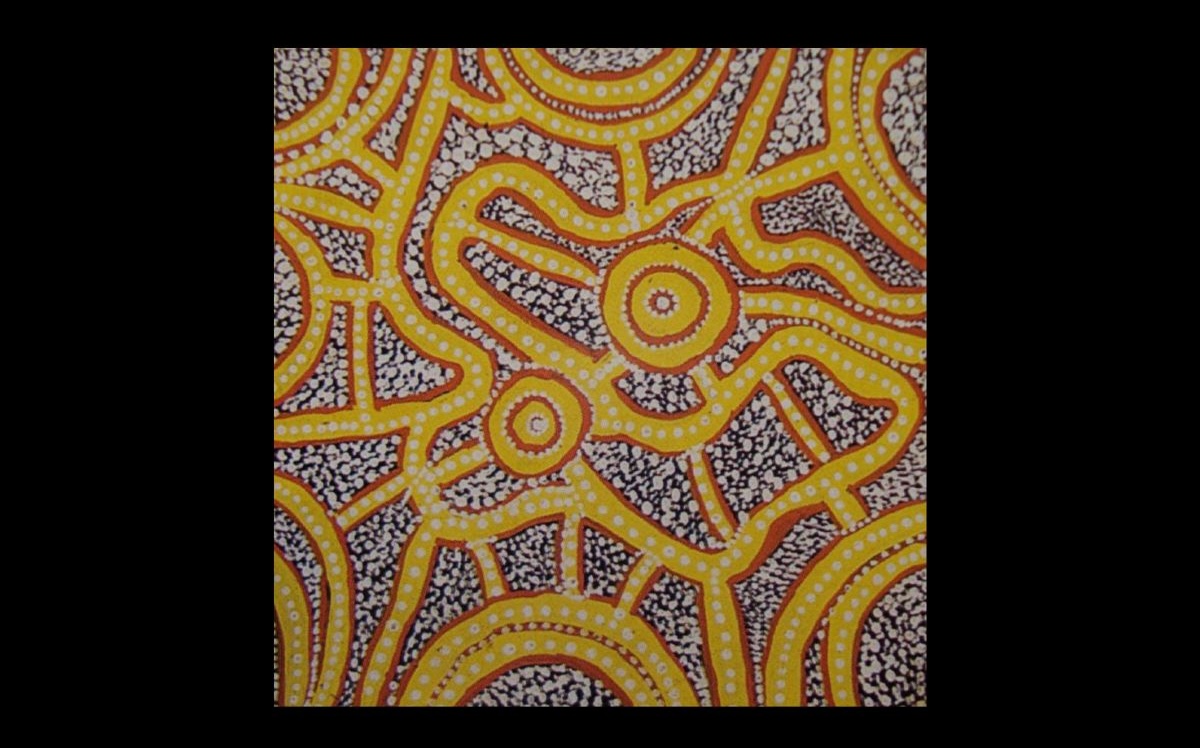
Ice Dreaming, c. 1971/72
Synthetic polymer on board
Hammerprice: A$5000
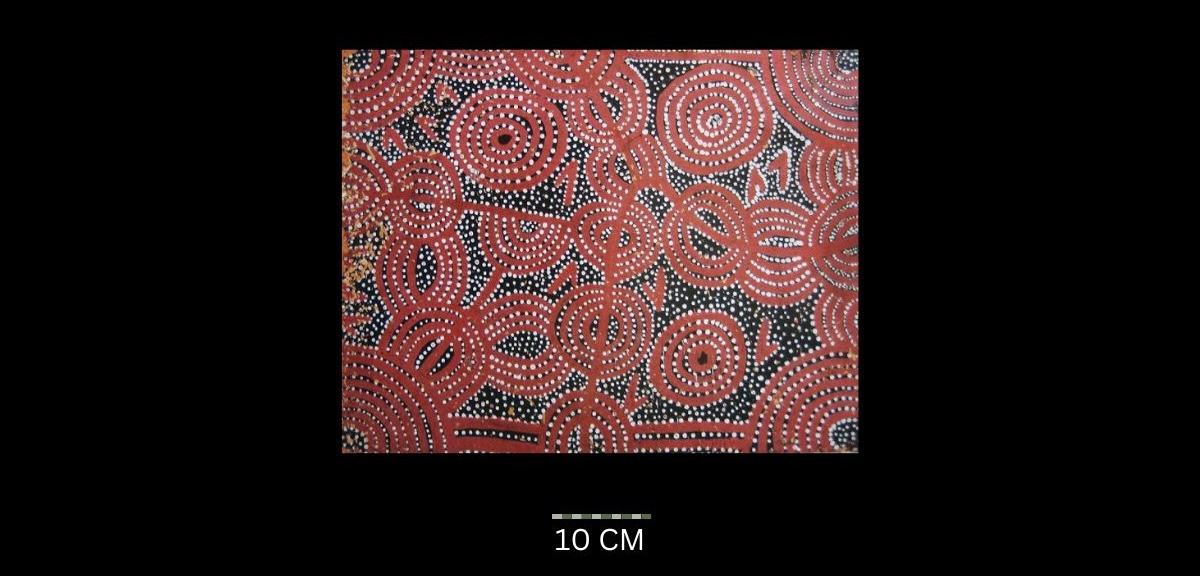
Maggie Springs 1972
Synthetic polymer powder paint on composition board, the artist’s name, ‘Charlie jungari (sic)’ and the stock number 5025 inscribed verso,
51 x 39.5 cm
Hammerprice: A$18,000
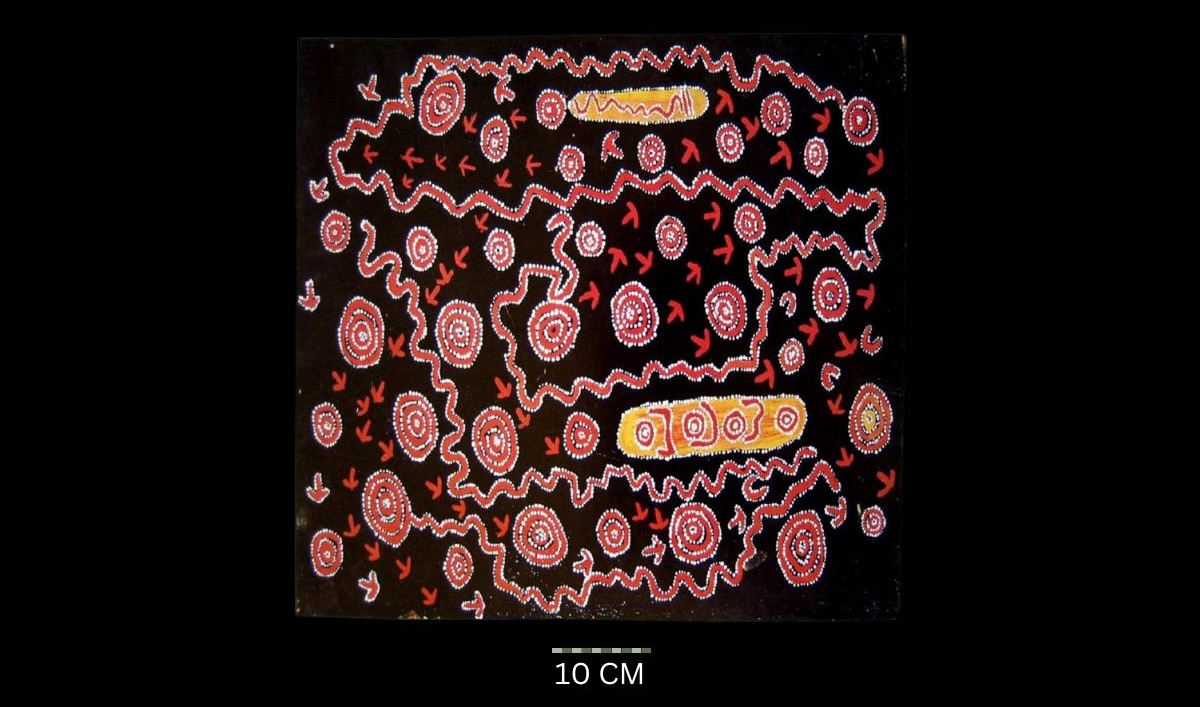
Emu Dreaming 1972
Synthetic polymer powder paint on composition board, bears Stuart Art Centre consignment number 19011 on the reverse,
60 x 40 cm
Hammerprice: A$20,000
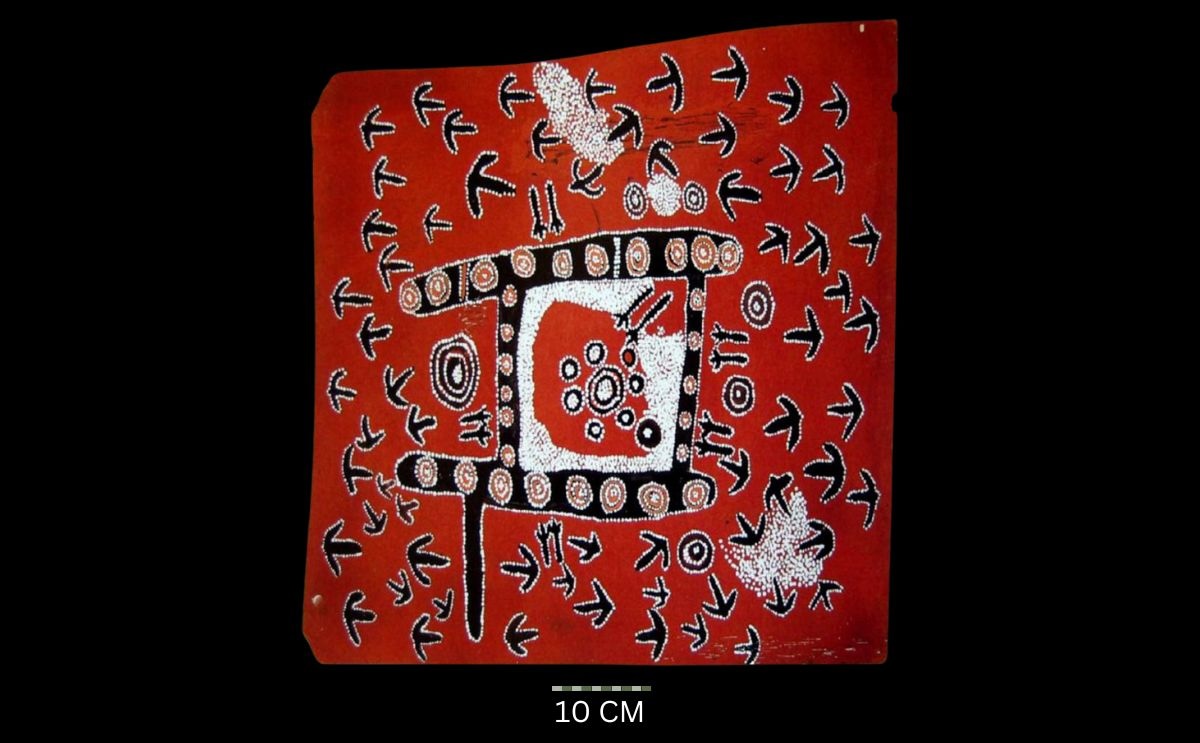
Emu Dreaming 1972
Synthetic polymer powder paint on composition board, bears Stuart Art Centre consignment number 19068 on the reverse,
65 x 46 cm
Hammerprice: A$20,000
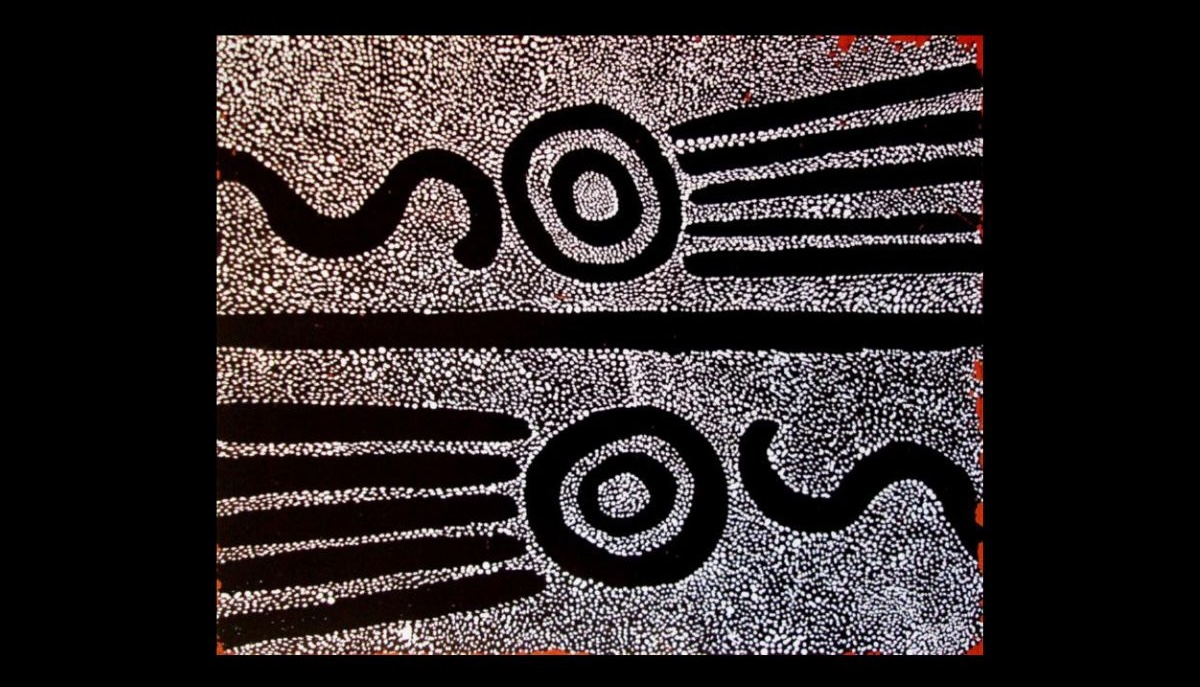
Snake Story 1972
Synthetic polymer powder paint on composition board
Hammerprice: A$22,000
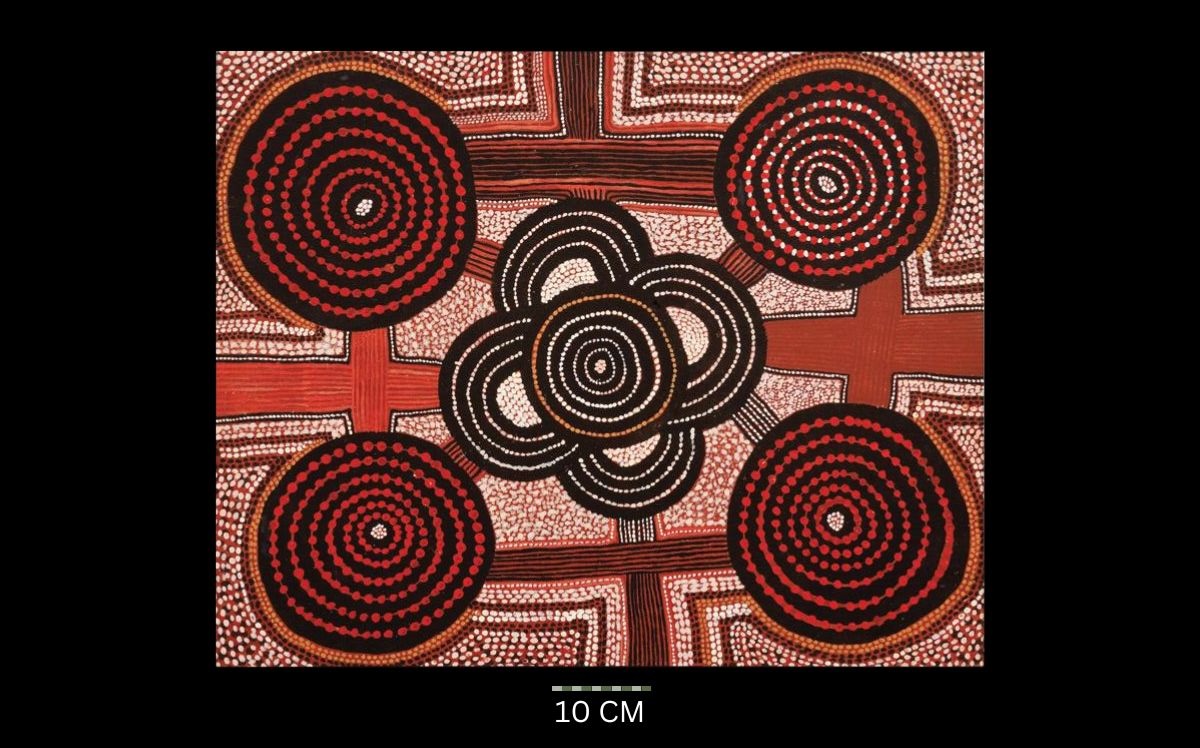
Nyinga Dreaming, Circa 1972
Synthetic polymer paint on board,
76 x 60 cm
Hammerprice: A$18,000

Untitled 1972
Synthetic polymer powder paint on composition board, bears consignment number 19012 on the reverse,
60 x 45 cm
Hammerprice: A$7000
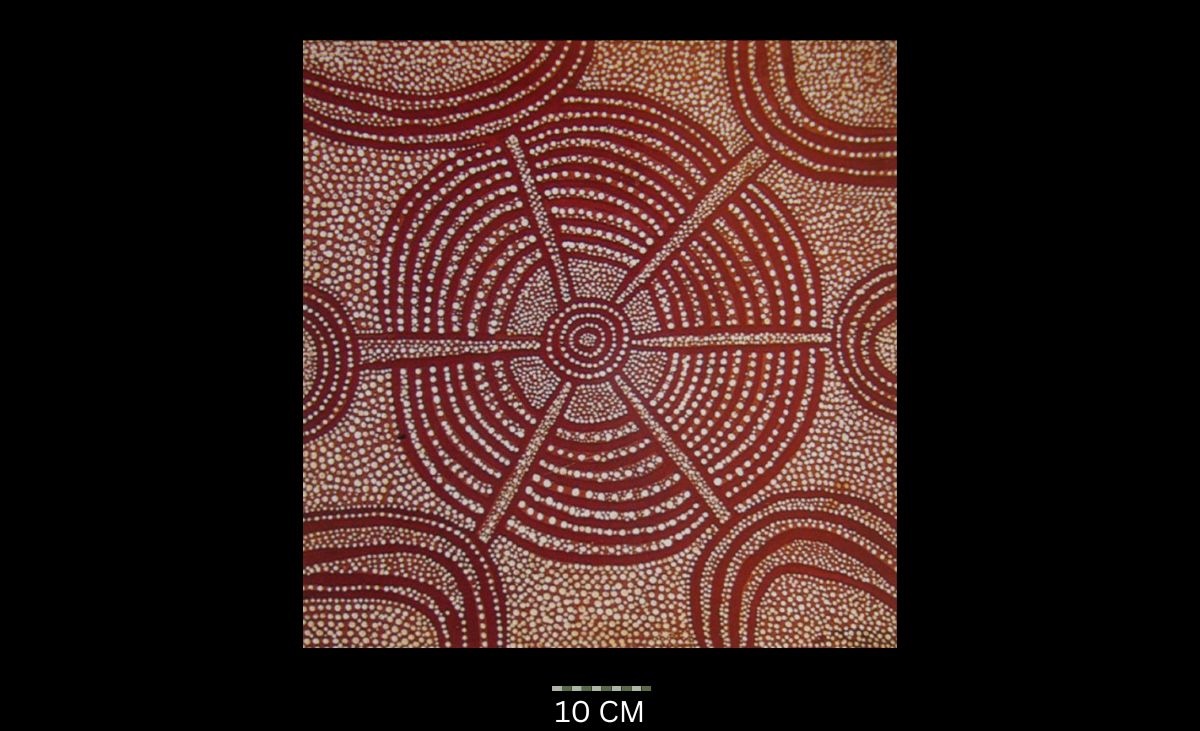
Angala Coat of Arms 1972
Ochre and synthetic polymer on board,
60 x 59 cm
Hammerprice: A$15,500
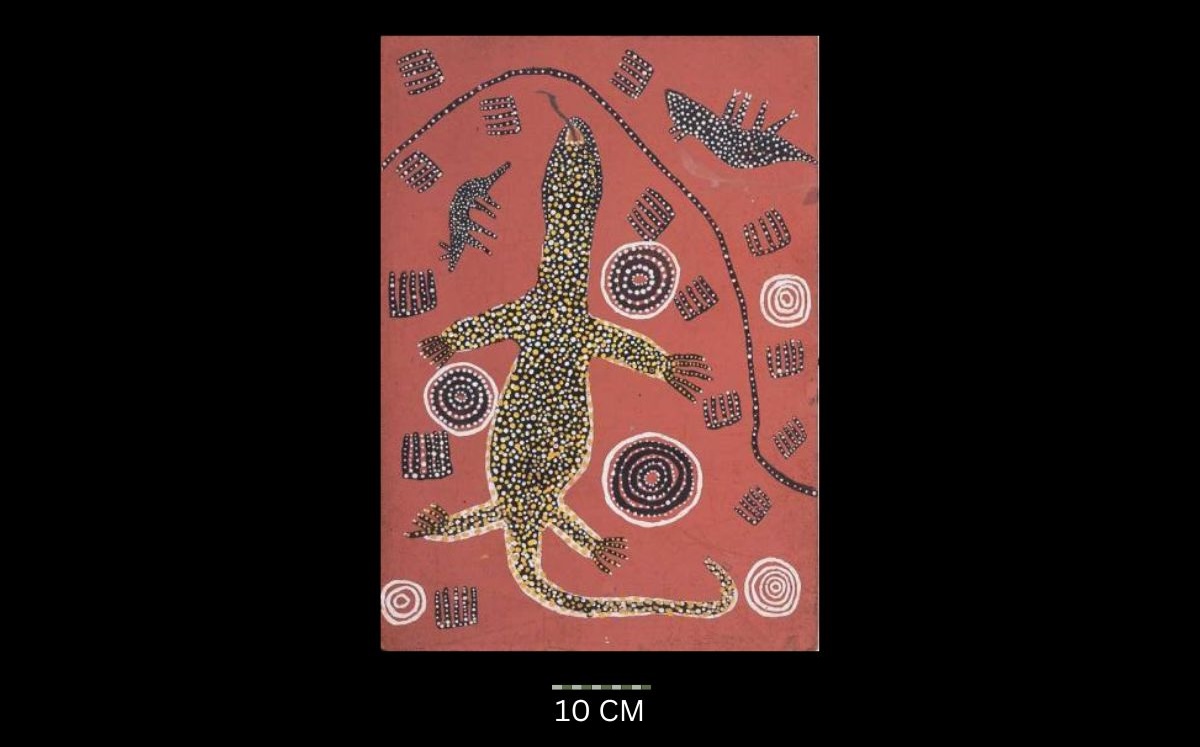
Goanna Story 1972
Synthetic polymer paint and natural earth pigments on composition board, bears Stuart Art Centre consignment number 19044 on the reverse,
61 x 43.5 cm
UNSOLD
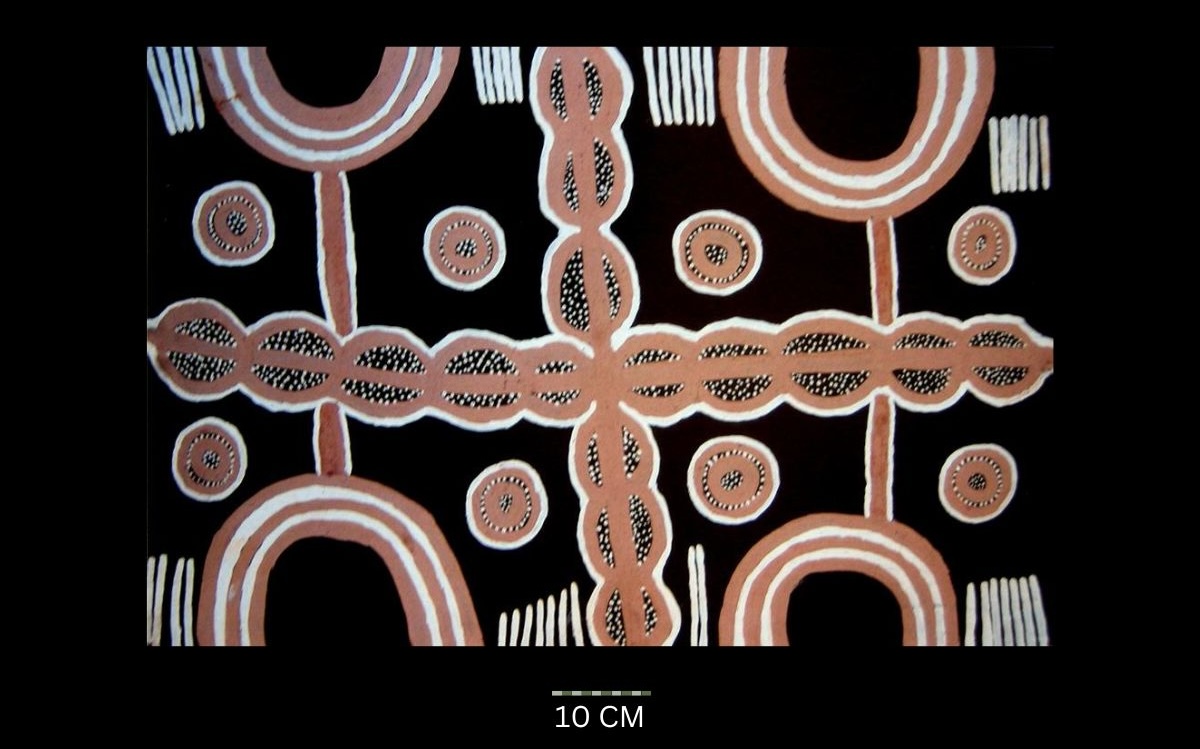
Frog Totem 1972
Synthetic polymer paint on composition board, bears Stuart Art centre 8037 on the reverse,
90 x 60 cm
UNSOLD
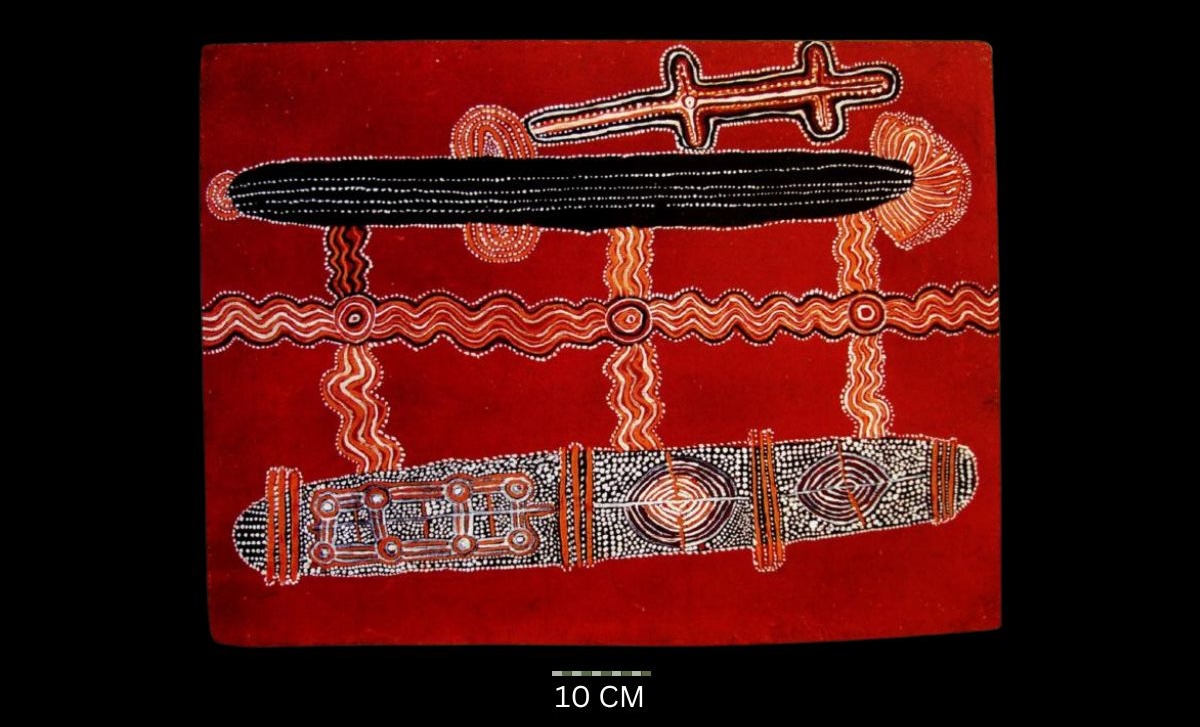
Untitled, 1972
Synthetic polymer powder paint on composition board, bears the artist’s name and consignment number 18006 together with the catalogue numbers 41 and 5, and the paintings date of execution, 26 September 1972 on the reverse,
61 x 45.5 cm
Hammerprice: A$26,000
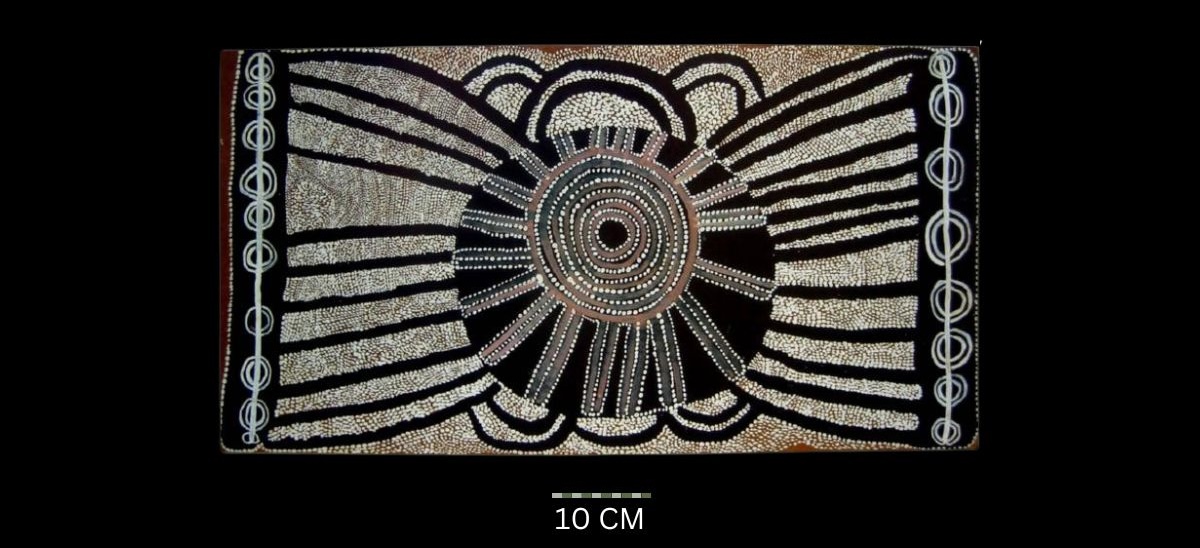
The Trial, 1972
Synthetic polymer paint on composition board,
76 x 40.5 cm
Hammerprice: A$180,000
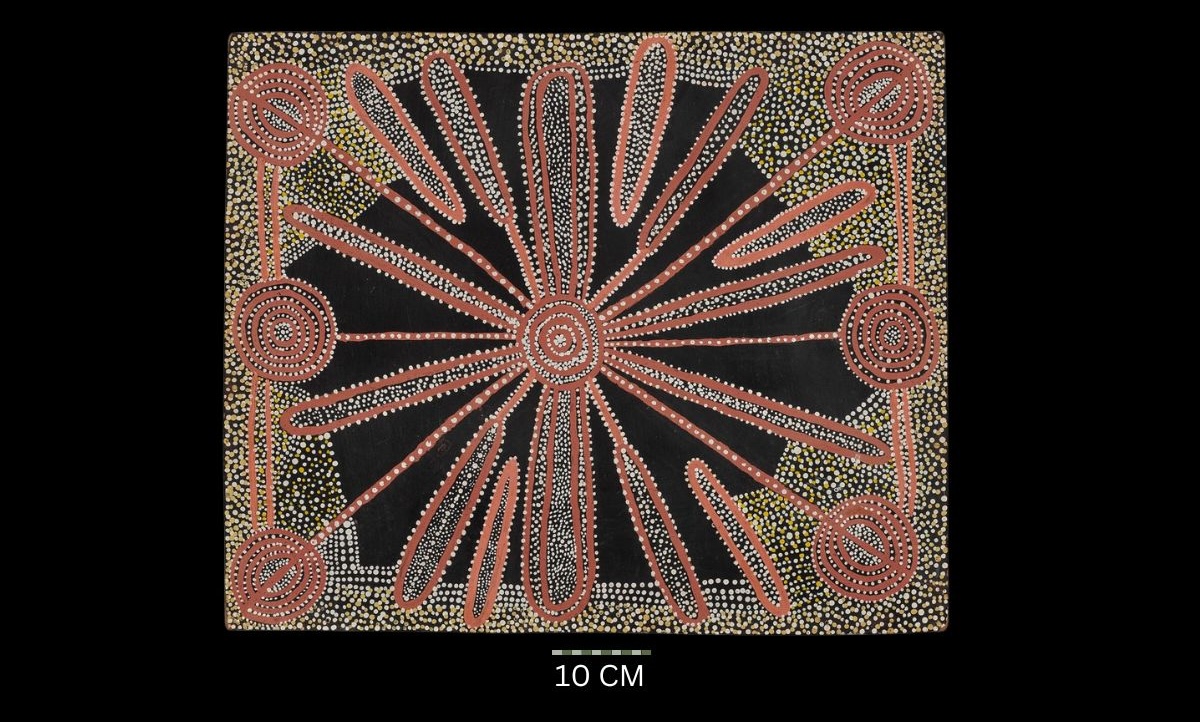
Untitled (Men’s Ceremony), 1972
Synthetic polymer powder paint on composition board, bears inscription verso: artist’s name, date and Stuart Art Centre cat. 19007,
61 x 51 cm
Hammerprice: A$70,000
Evolution of Aesthetic Focus Over Symbolic Density (1973–1974)
In the mid-1970s, Charlie Tjungurrayi’s Western Desert painting style evolved further without radical departure. He continued to incorporate sacred iconography, yet these symbols began serving an increasingly aesthetic role. In works like Witchery Grub Dreaming, Tjungurrayi emphasized spatial harmony and balance, contributing to the abstract minimalism for which he became known. Even as Papunya artists such as Johnny Warrangula leaned heavily into dense dotting techniques, Charlie maintained focus on traditional churinga-inspired motifs. His works from this period stand as exemplars of how Aboriginal artists could navigate between cultural preservation and contemporary visual innovation.
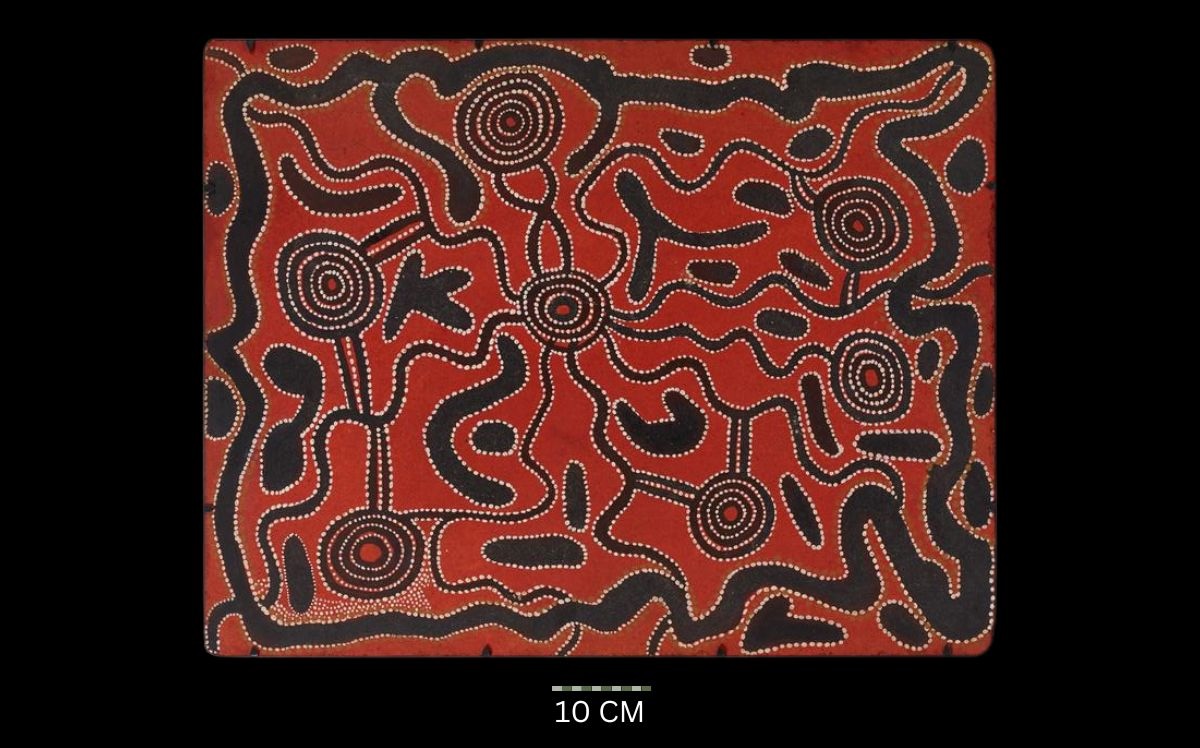
Water Snake Dreaming, C.1973
Synthetic polymer paint on composition board,
80 x 61 cm
Hammerprice: A$10,000
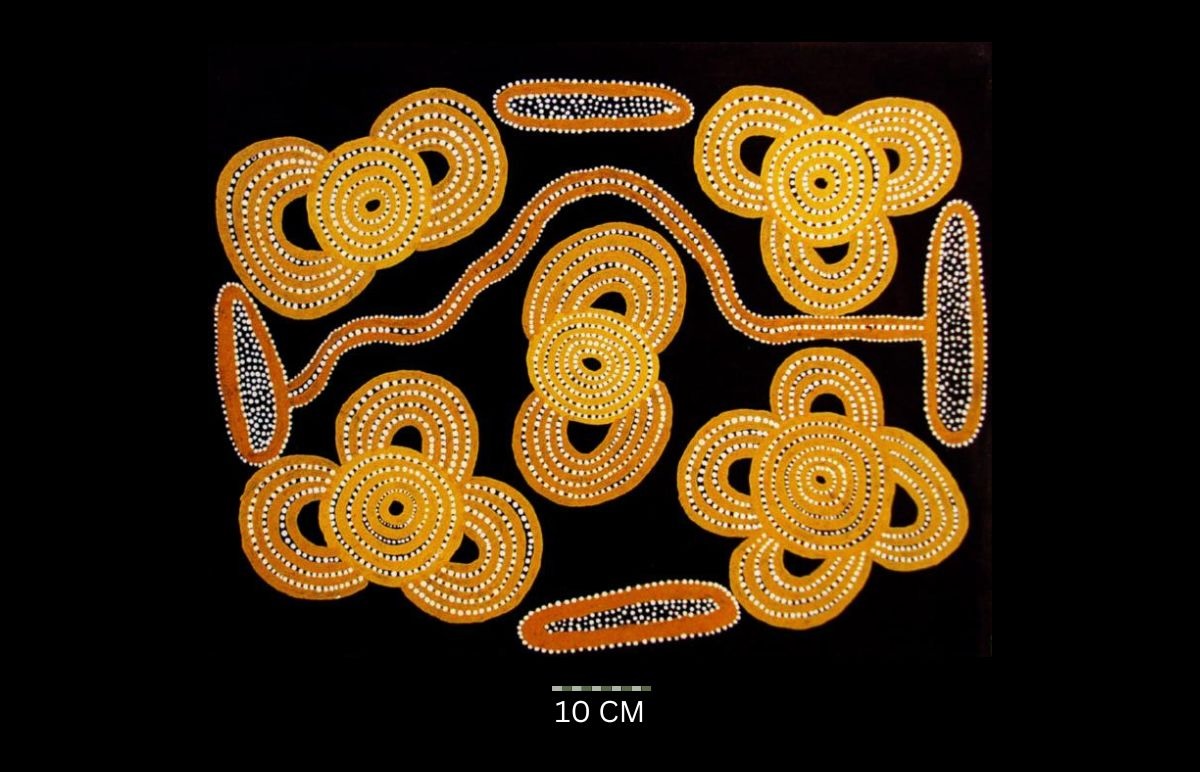
Sisters at Walungurunja 1973
Synthetic polymer paint on composition board, bears artist’s name, titles, date and Aboriginal Arts and Crafts Pty Ltd cat No. AAC73-CTI on the reverse,
78 x 61 cm
Hammerprice: A$8,000
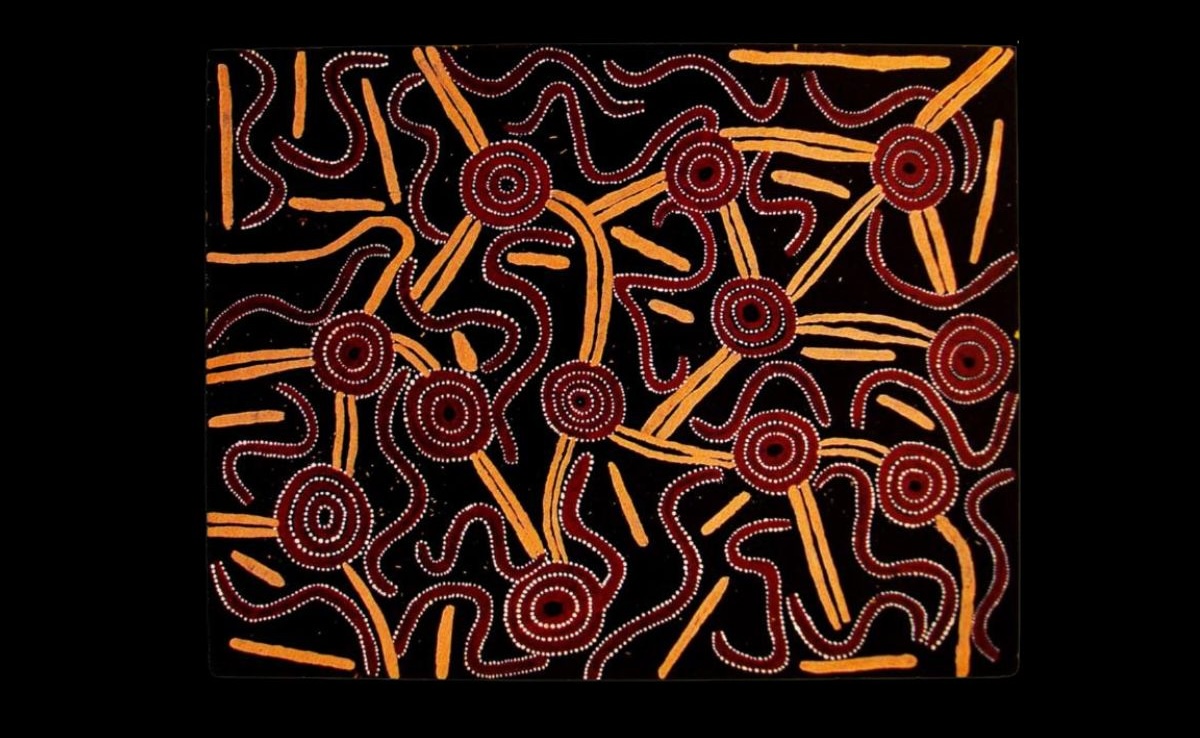
Witchetty Grub Dreaming at Nurapalangunja 1973
Synthetic polymer paint on composition board
Hammerprice: A$8,500
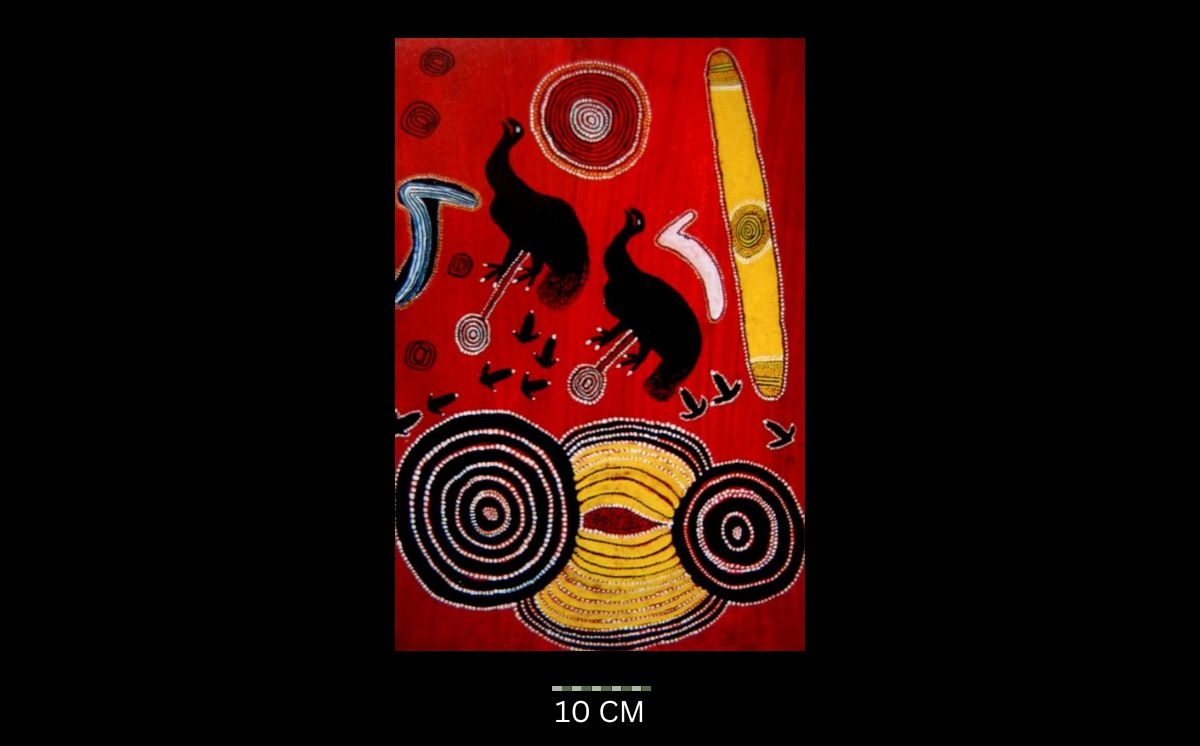
Emu Ancestor Story 1973
Synthetic polymer/powder paint on composition board, bears artist’s name and date on the reverse,
60.5 x 40.5 cm
Hammerprice: A$8,500
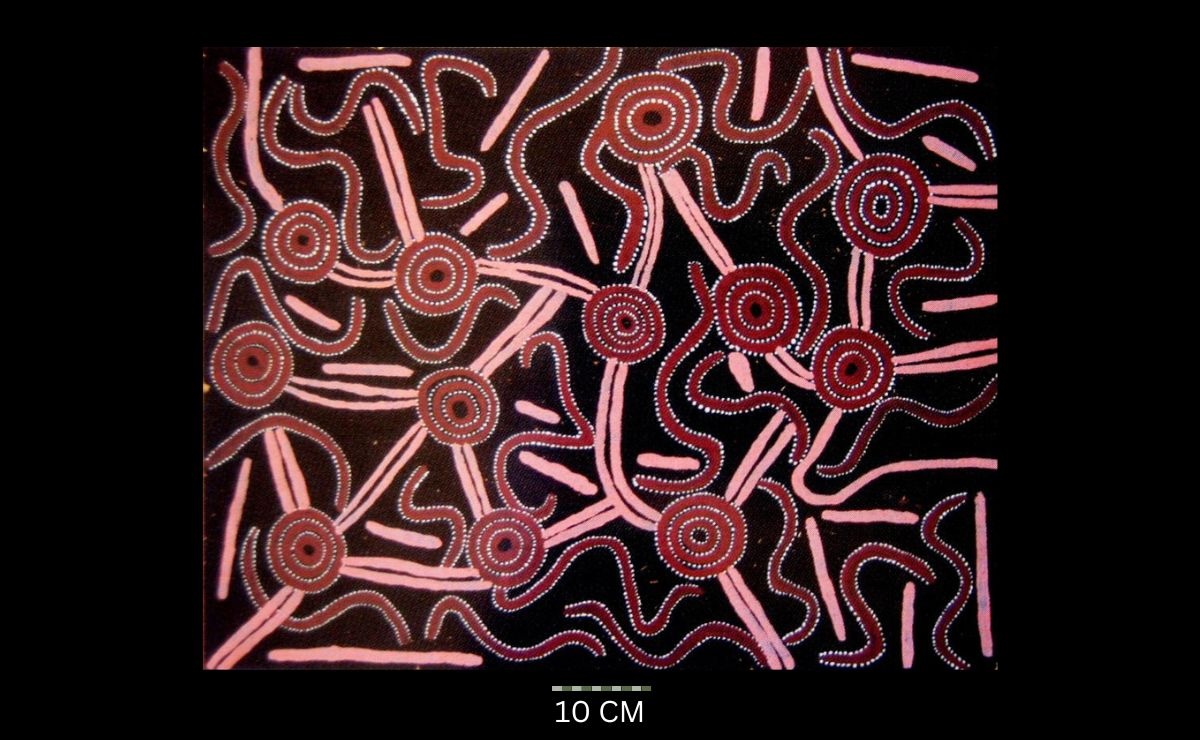
Witchetty Grub Dreaming at Nurapalangunja 1973
Synthetic polymer paint on composition board,
79 x 61 cm
Hammerprice: A$8,000

The Legend of Tingari at Pirmarlyna 1973
Synthetic polymer paint on composition board, bears Papunya Tula Artists catalogue number CT731142 on the reverse,
90 x 70 cm
Hammerprice: A$7,000
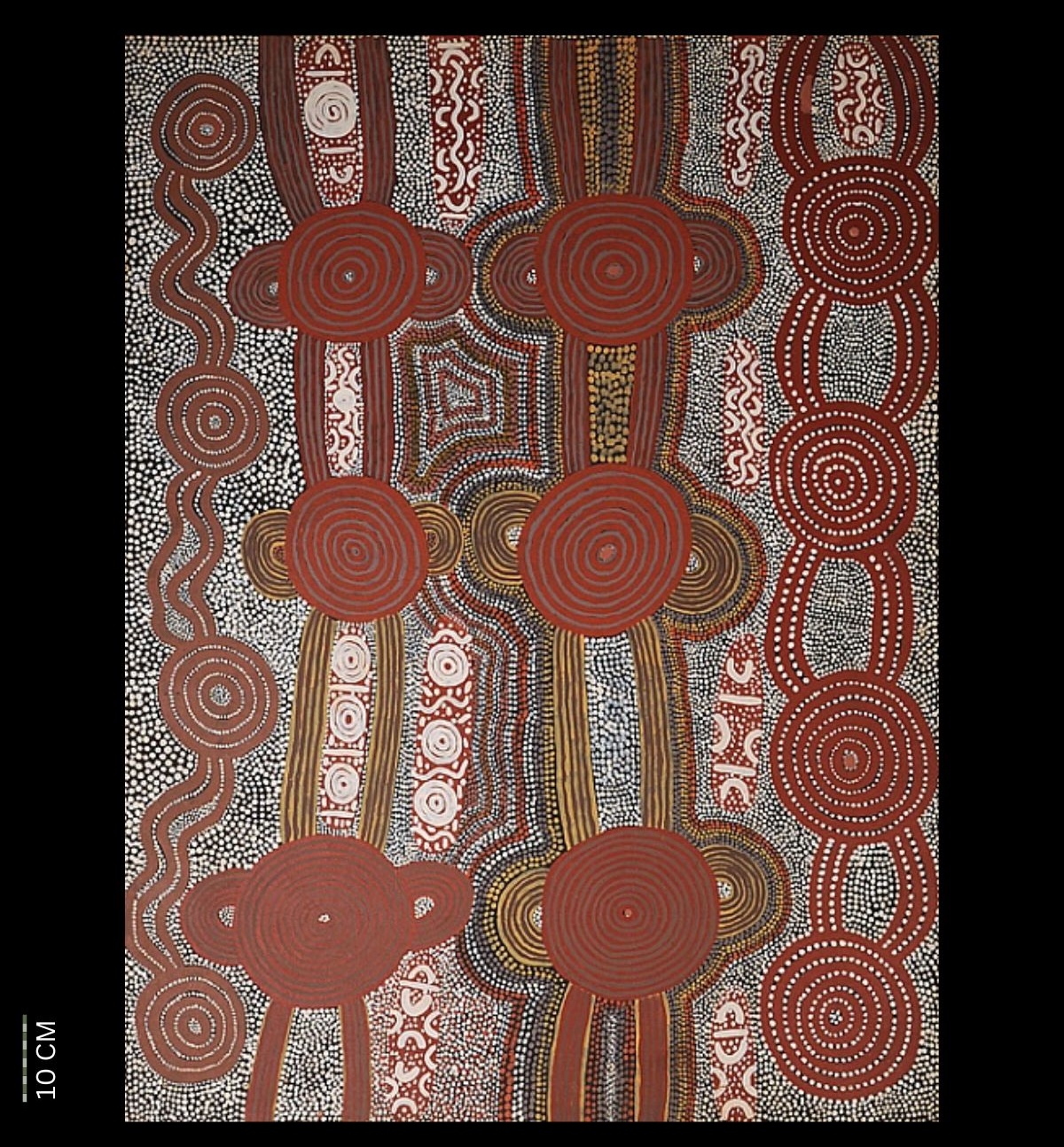
Untitled Papunya, Central Australia, circa 1973
Synthetic polymer paint on composition board,
122 x 91.5 cm
Hammerprice: A$42,000
Charlie Tawara Tjungurayi artworks 1974
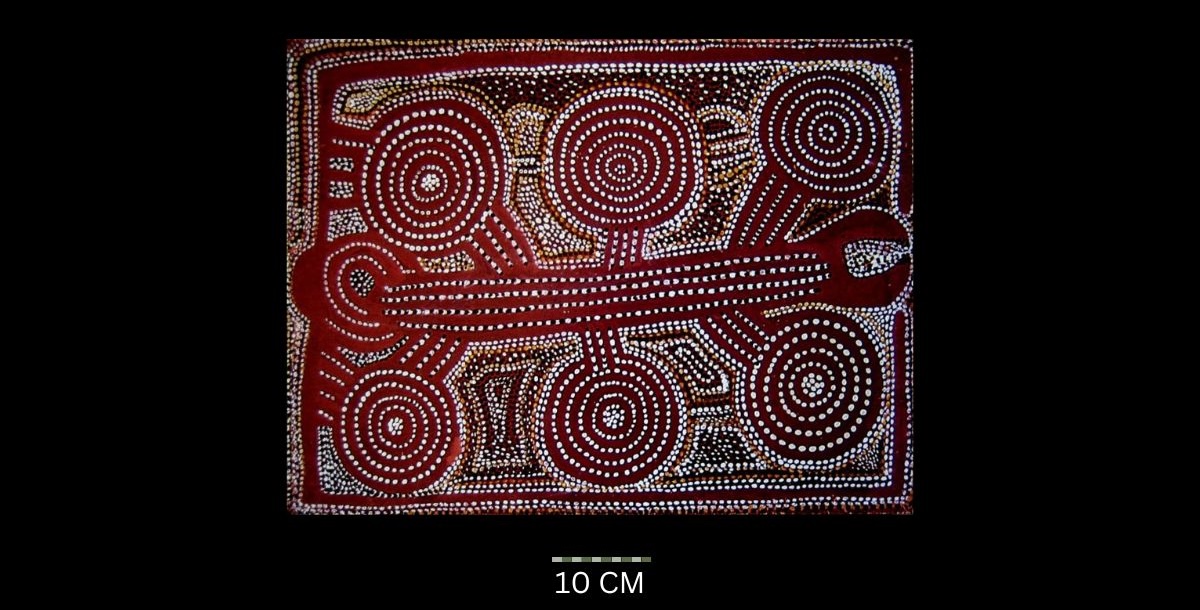
Old Man Dreaming at Namanya Rockhole 1974
Synthetic polymer paint on board, bears artist’s name and title on the reverse,
62 x 46 cm
Hammerprice: A$7,800
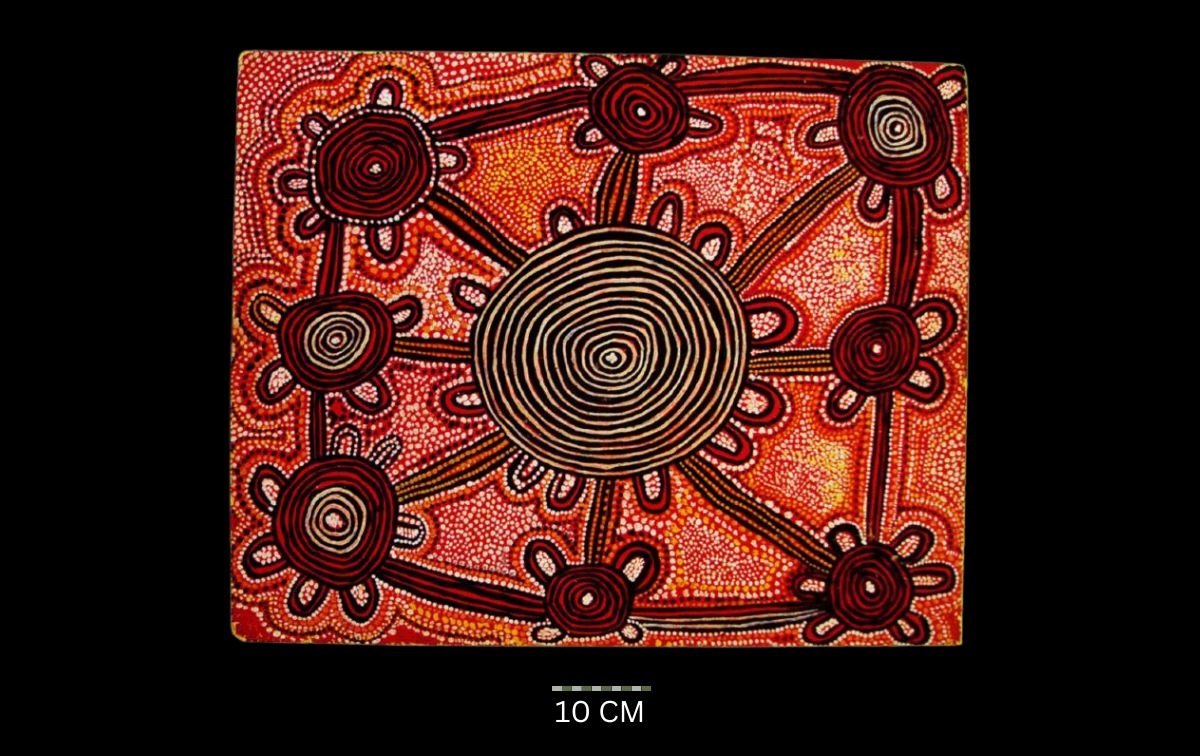
Ice Dreaming at Tjitururnga 1974
Synthetic polymer paint on canvas, bears artist’s name and title together with Papunya Tula cat No. 740710CT on the reverse,
76 x 61 cm
Hammerprice: A$11,000
Commercial Adaptation and brief Return to Minimalism (Post-1975)
After 1975, Charlie’s work adapted to shifts in the Aboriginal art market. While he continued to paint with commitment, most pieces were created on commercially available canvas boards rather than large-scale formats. Unlike Tim Leura, who used these new mediums to produce monumental works, Charlie’s paintings remained relatively modest in size and often catered to market demand. Yet he occasionally returned to his earlier, minimalist roots, most notably in Audience with the Queen, which recaptured the elegant restraint of his early 1970s output. In the 2000s, Charlie experimented with bold linear compositions off-canvas, a dramatic stylistic shift that, despite its innovation, failed to gain commercial traction. Still, his legacy within the Papunya Tula movement remains one of thoughtful evolution, technical mastery, and cultural integrity.
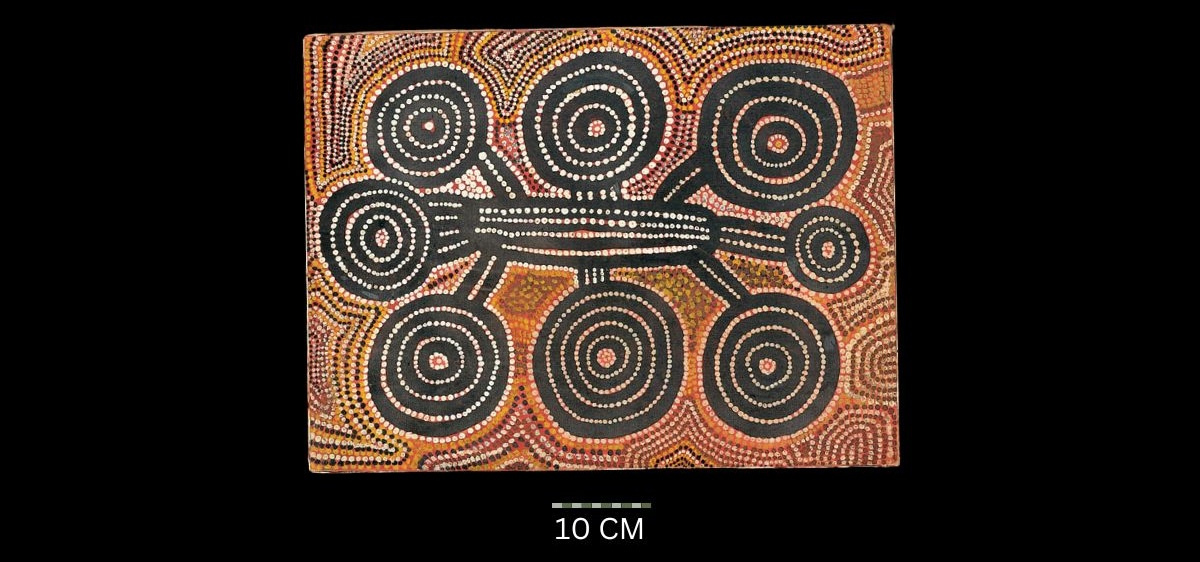
Untitled 1975
Synthetic polymer paint on canvas on board,
61 x 45.5 cm
Hammerprice: A$5500
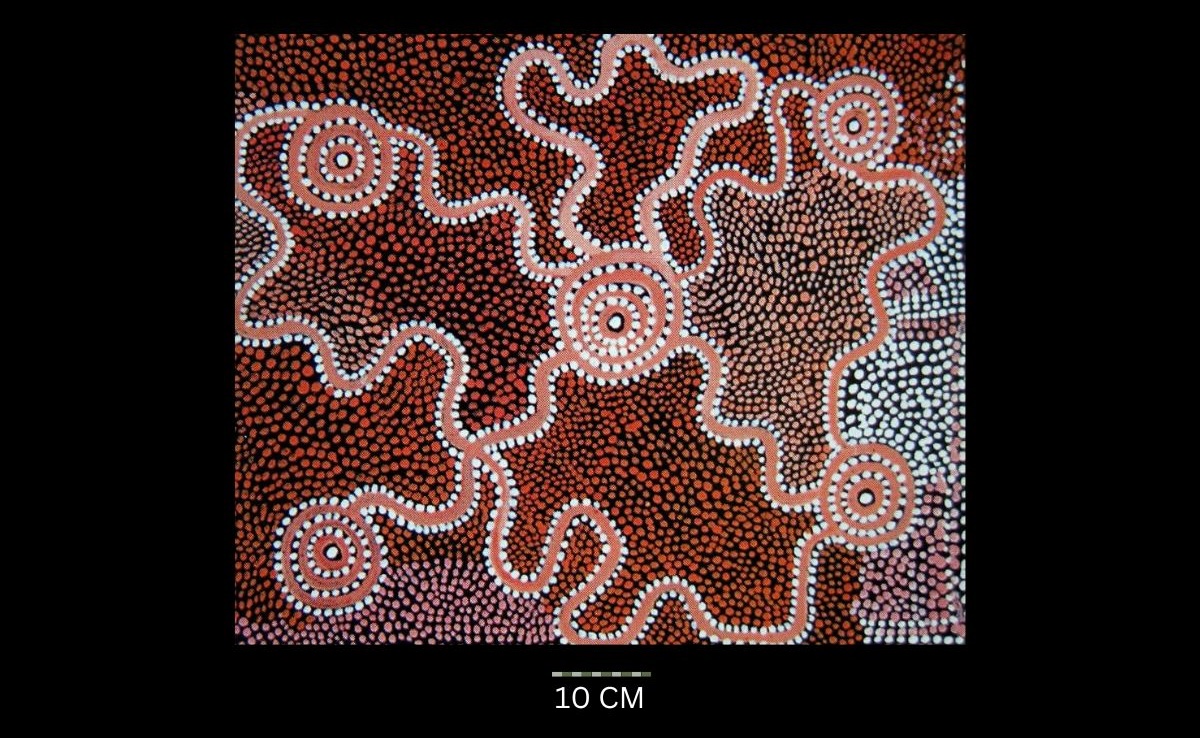
Waati G’wala; Man of the Ice-cold Time 1975
Synthetic polymer paint on canvas board, bears artist’s name on the reverse,
61 x 51 cm
Hammerprice: A$1900
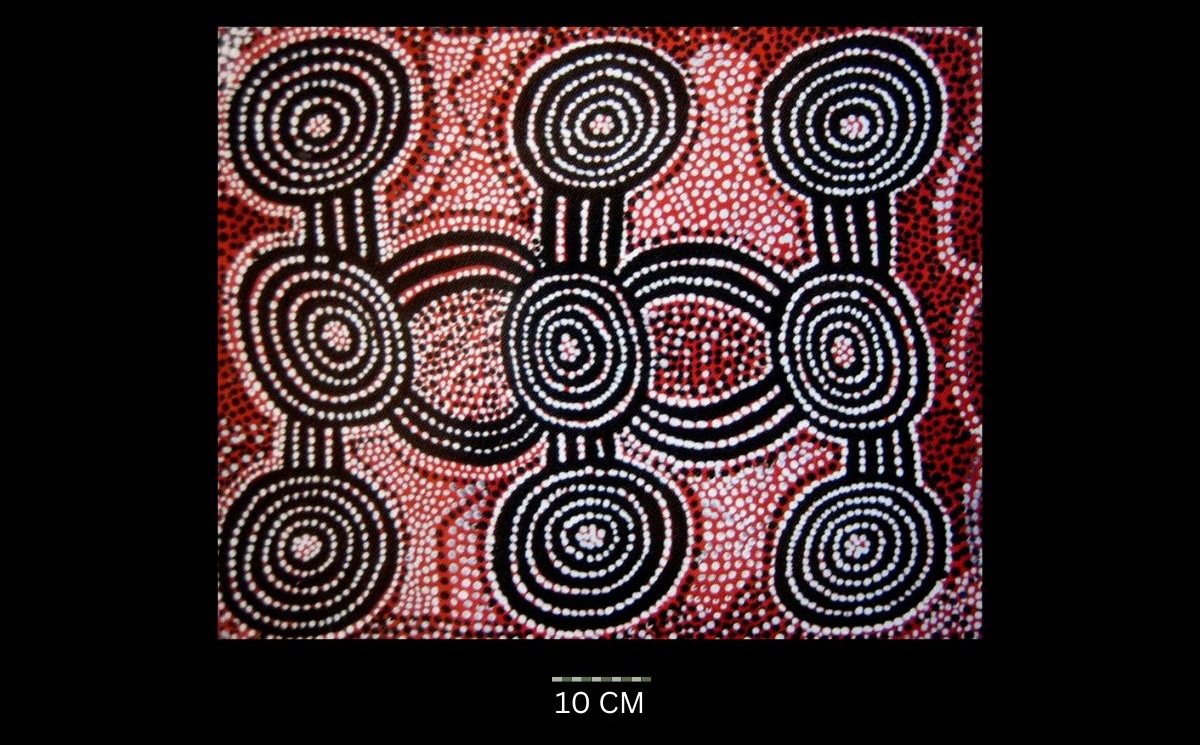
Tingari 1975
Synthetic polymer paint on canvasboard, bears Papunya Tula catalogue number CT751227 and Aboriginal Arts Board number AAB-76/982,
76.5 x 61 cm
Hammerprice: A$2600
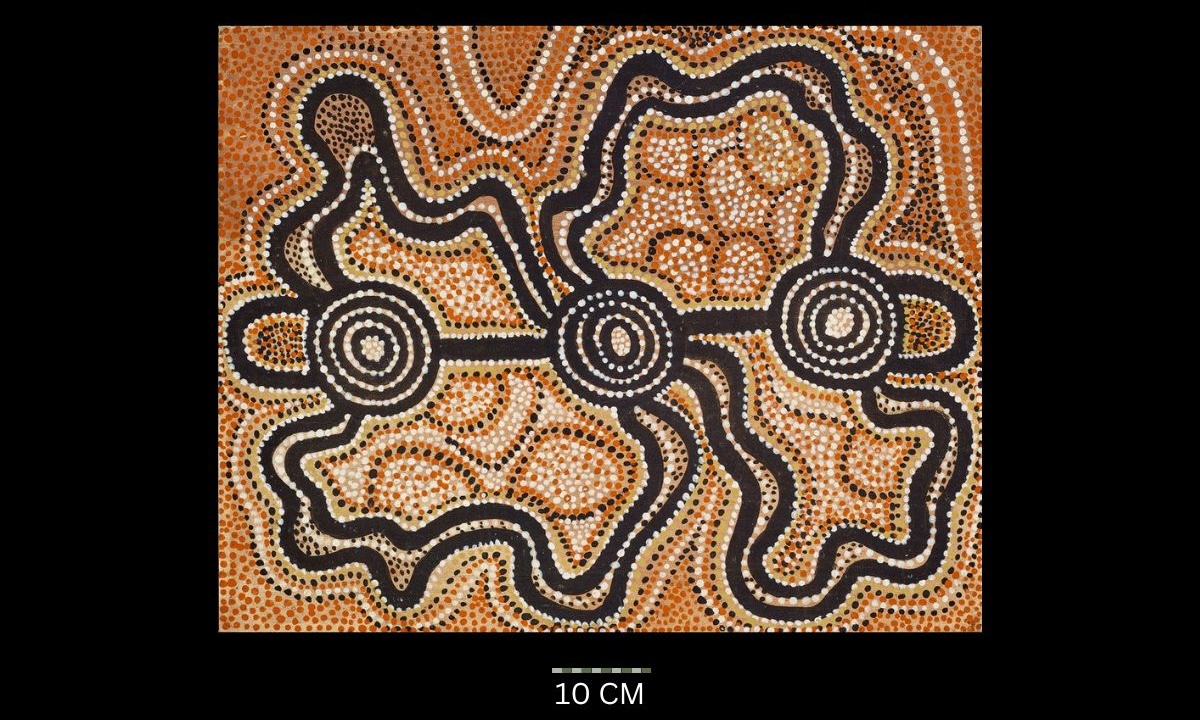
Untitled, 1975
Synthetic polymer paint on canvas board, bears inscription verso: Papunya Tula Artists cat. CT75638,
76.5 x 61 cm
Hammerprice: A$6500
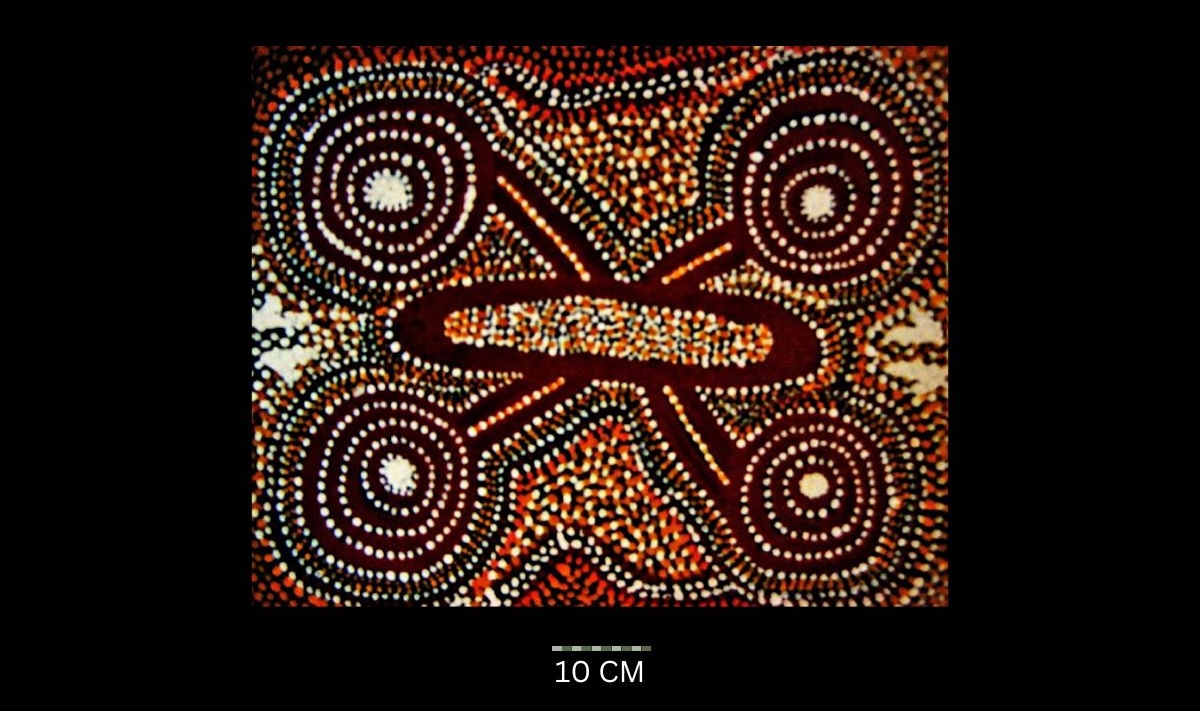
Untitled c. 1975
Synthetic polymer paint on composition board,
69 x 50 cm5
Hammerprice: A$10,000
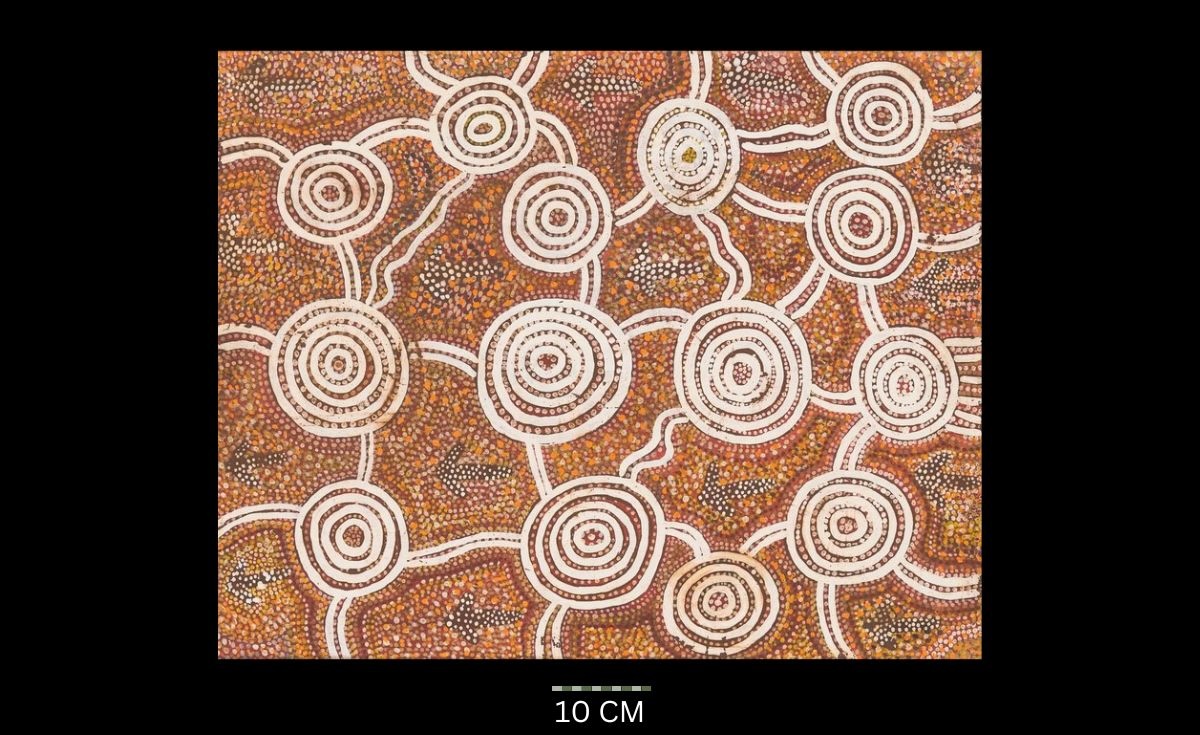
Untitled (1975)
Synthetic polymer paint on canvas board, bears Papunya Tula Artists cat. no. verso,
76 x 60 cm
Hammerprice: A$5000
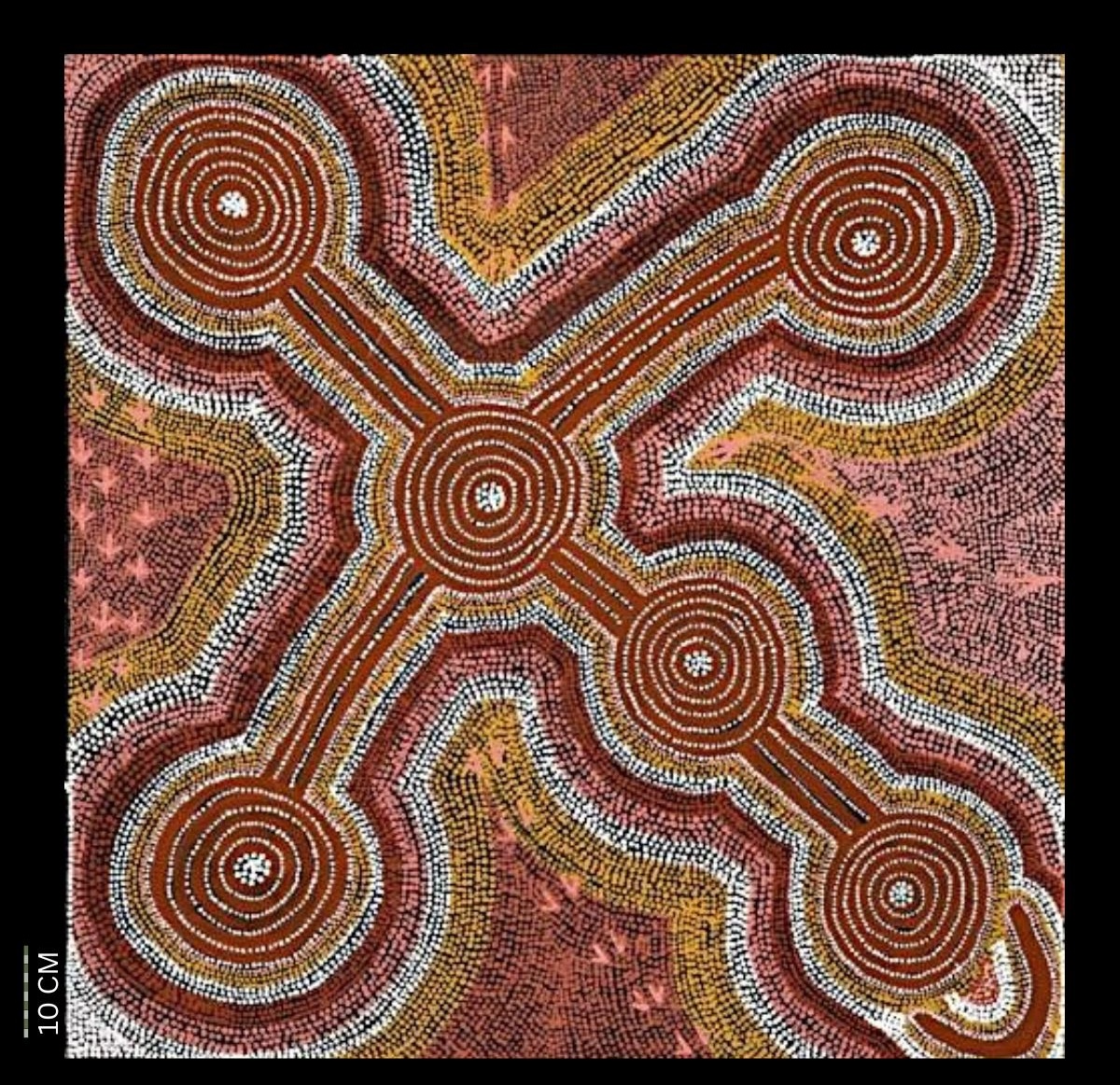
Untitled (1975)
Synthetic polymer paint on canvas board, bears Papunya Tula Artists cat. no. verso,
76 x 60 cm
Hammerprice: A$5000
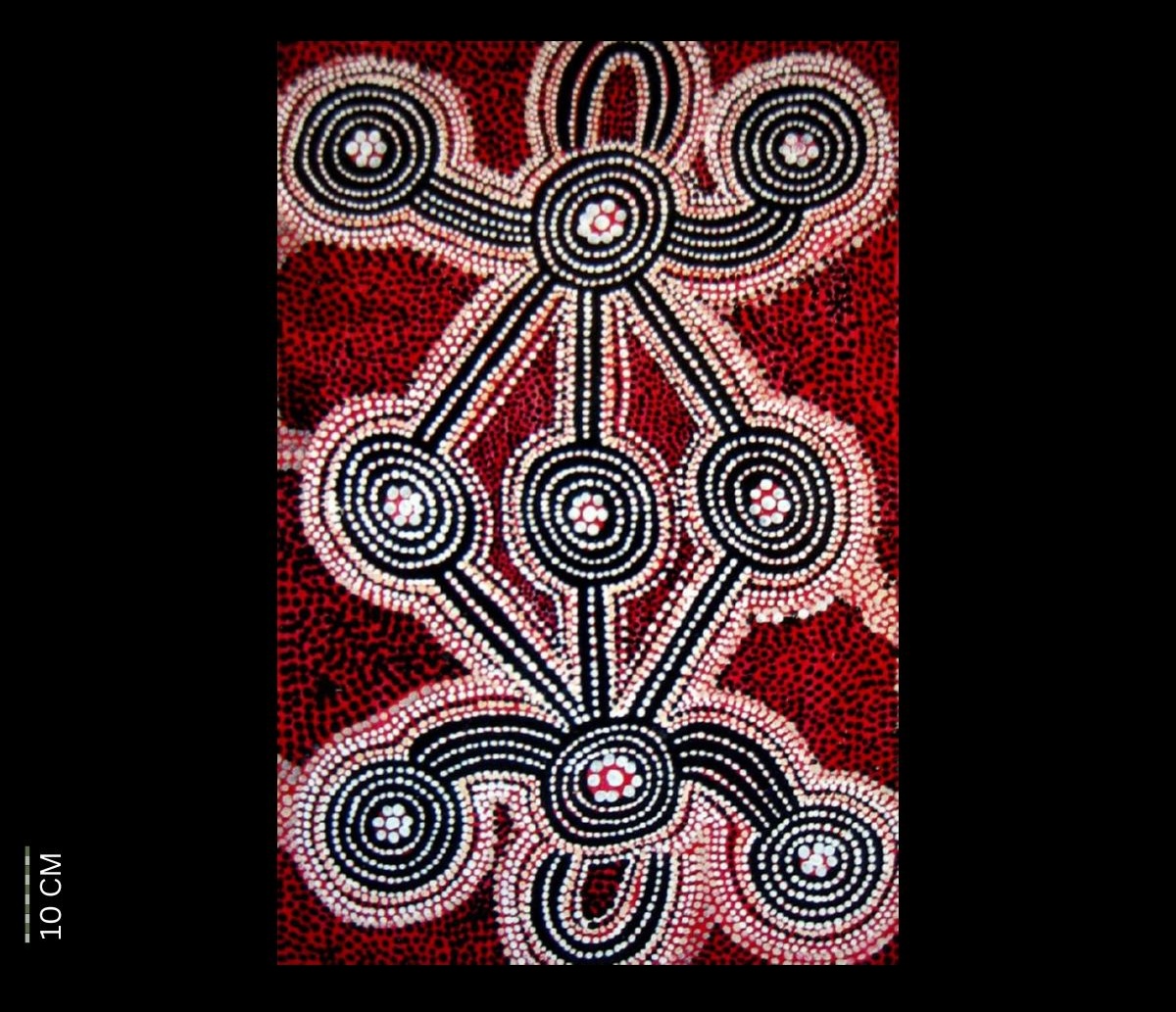
Ice Dreaming
Synthetic polymer paint on composition board, bears artist’s name, title, size and Corbally-Stourton Contemporary Art catalogue number CSCA227 [24] on label on the reverse,
94.5 x 62.5 cm
Hammerprice: A$3600
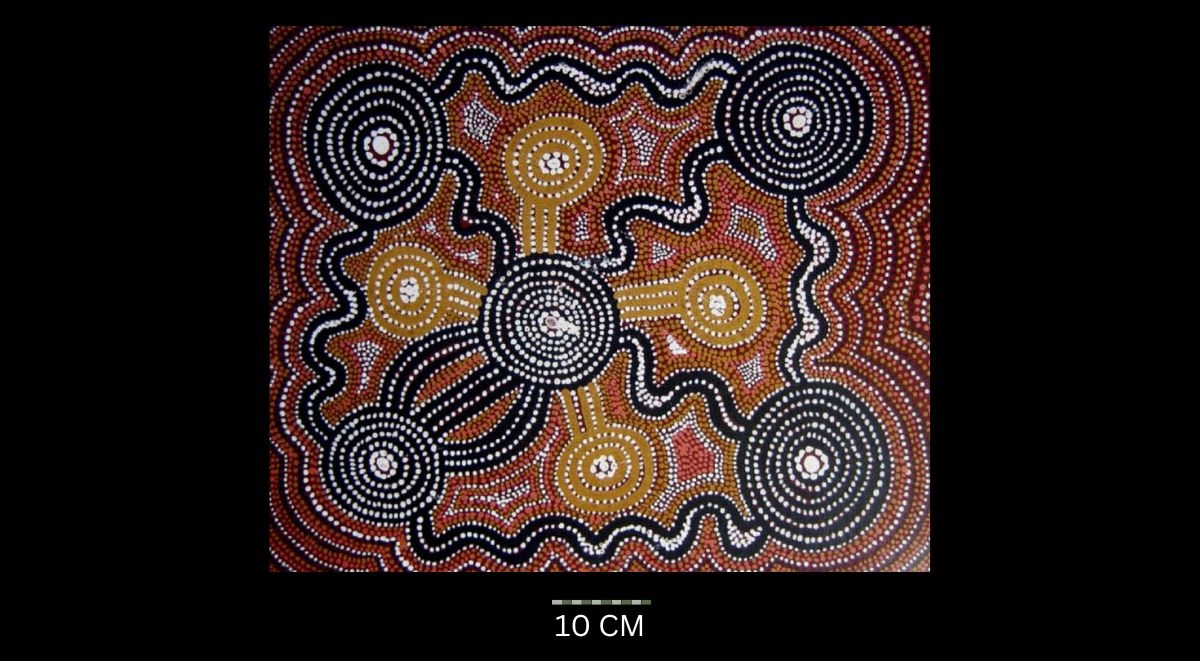
Untitled, Late 1970s
Synthetic polymer paint on artist’s board,
54.5 x 44.5 cm
Hammerprice: A$2700
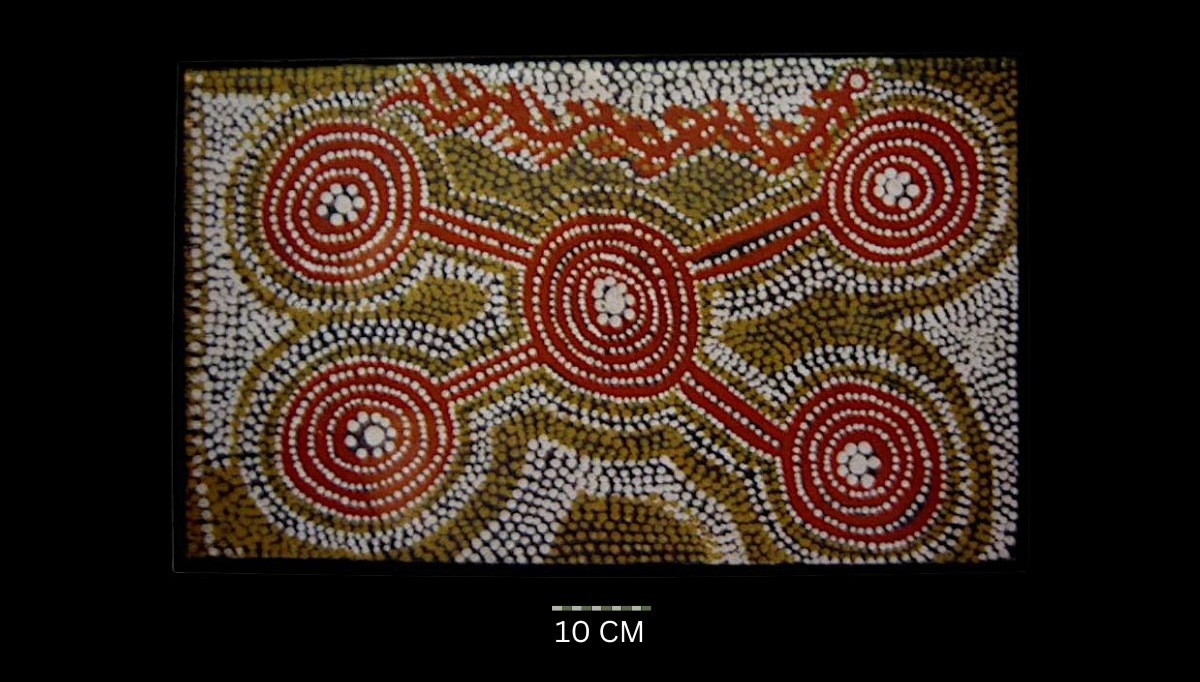
Wati Kutjarri (Two Men) 1978
Synthetic polymer paint on composition board,
52 x 30 cm
Hammerprice: A$1350
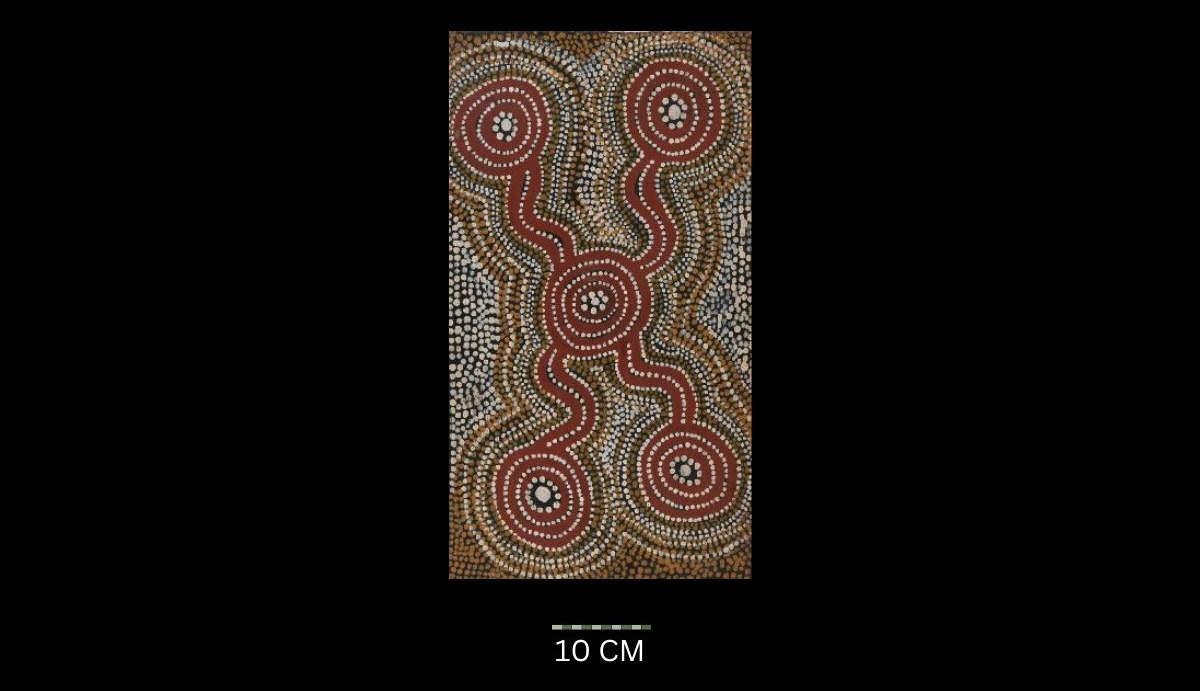
Untitled, 1979
Synthetic polymer paint on composition board,
54 x 30 cm
Hammerprice: A$950

Frog Dreaming 1979
Synthetic polymer paint on masonite, inscribed on backing verso: Geoff Bardon,
55 x 48 cm
Hammerprice: A$8,500
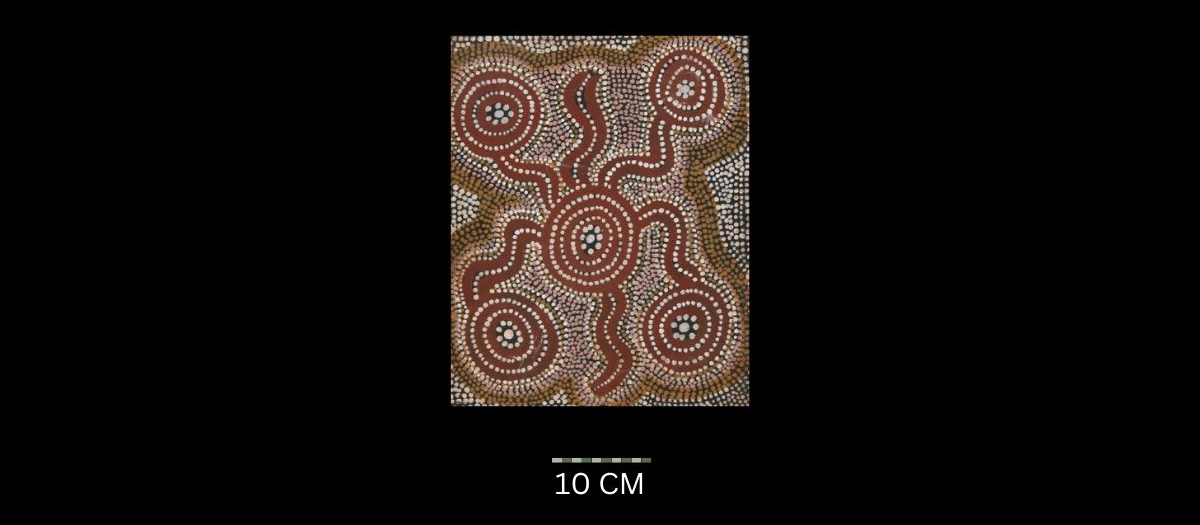
Untitled, 1979
Synthetic polymer paint on composition board,
37 x 30 cm
Hammerprice: A$850
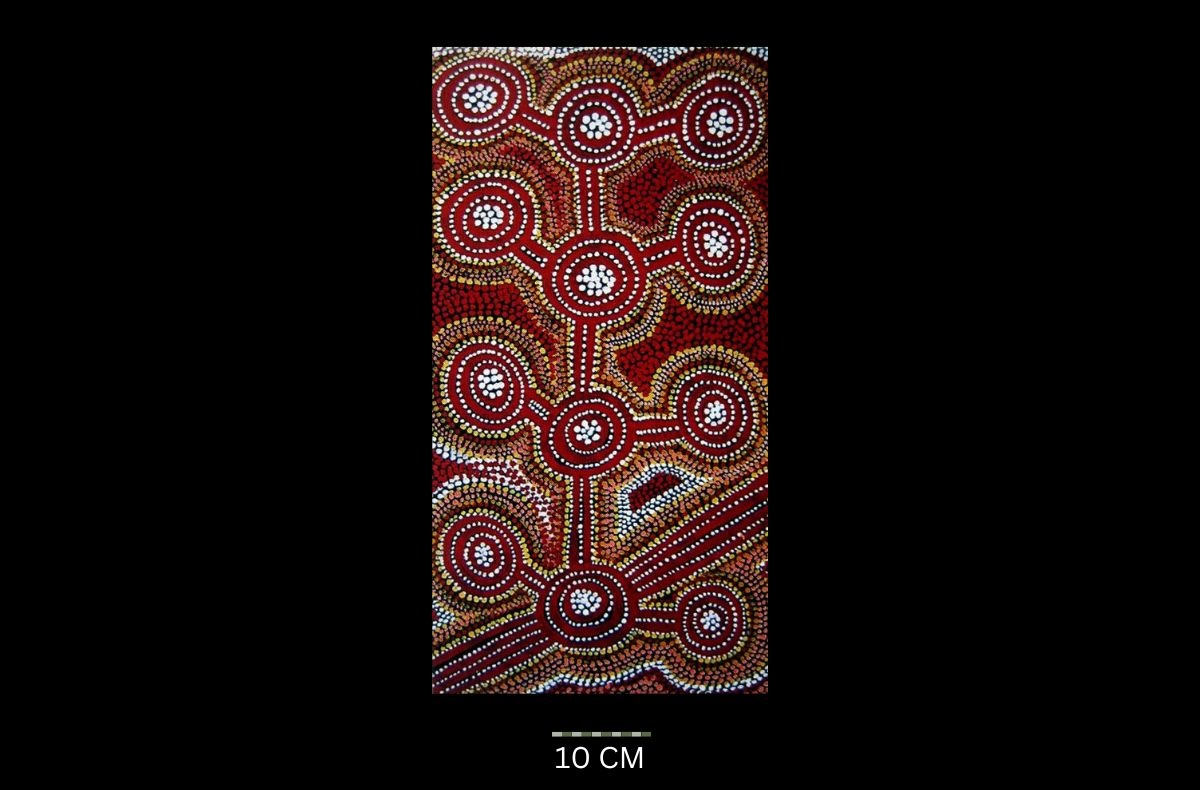
Man’s Dreaming 1980
Synthetic polymer paint on composition board, bears artist’s name, title and date on the reverse,
64 x 32 cm
Hammerprice: A$1000
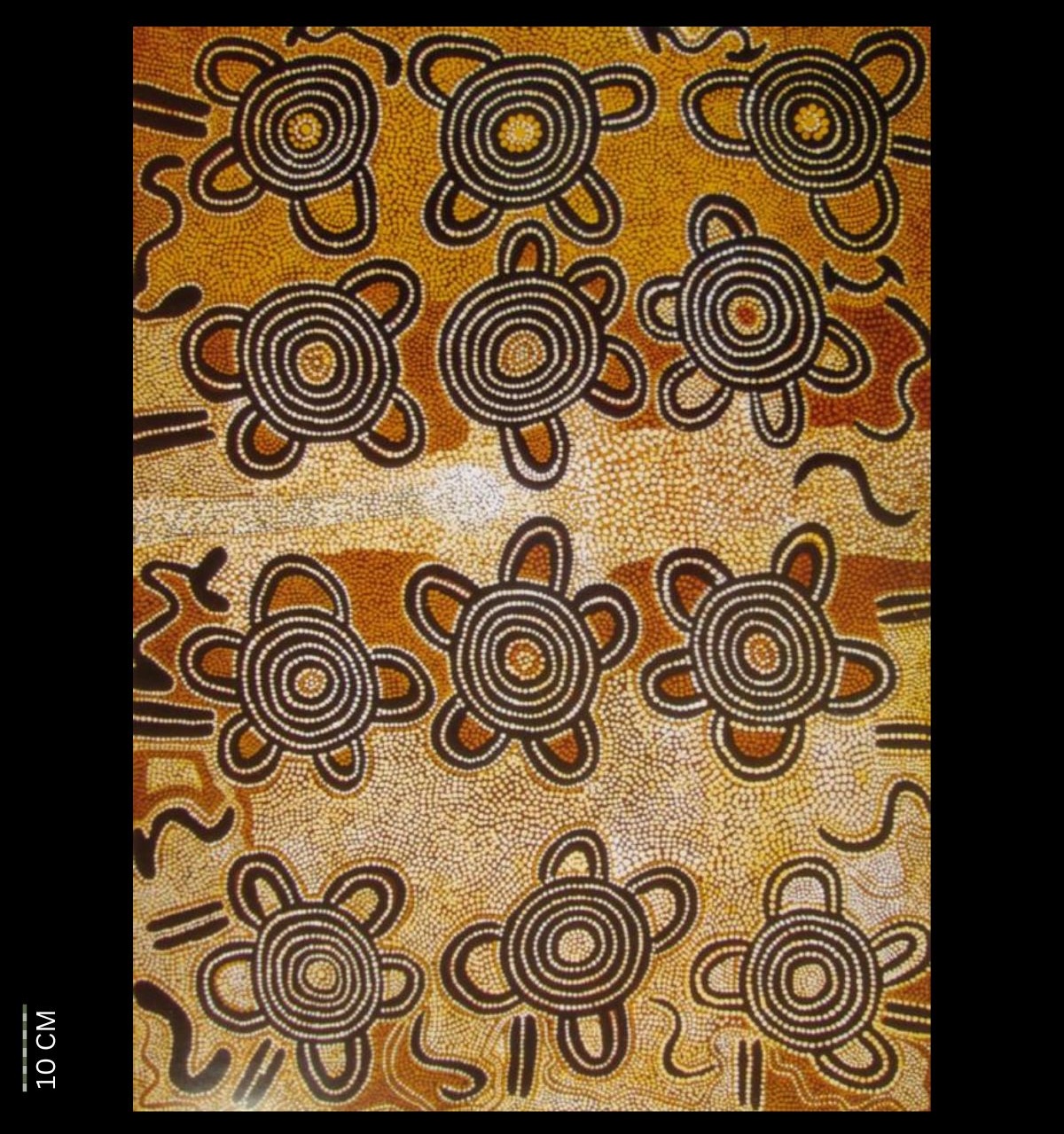
Mitukatjirri 1980
Synthetic polymer on board, unsigned, bears artist’s name on reverse,
122 x 90 cm
Hammerprice: A$8,000
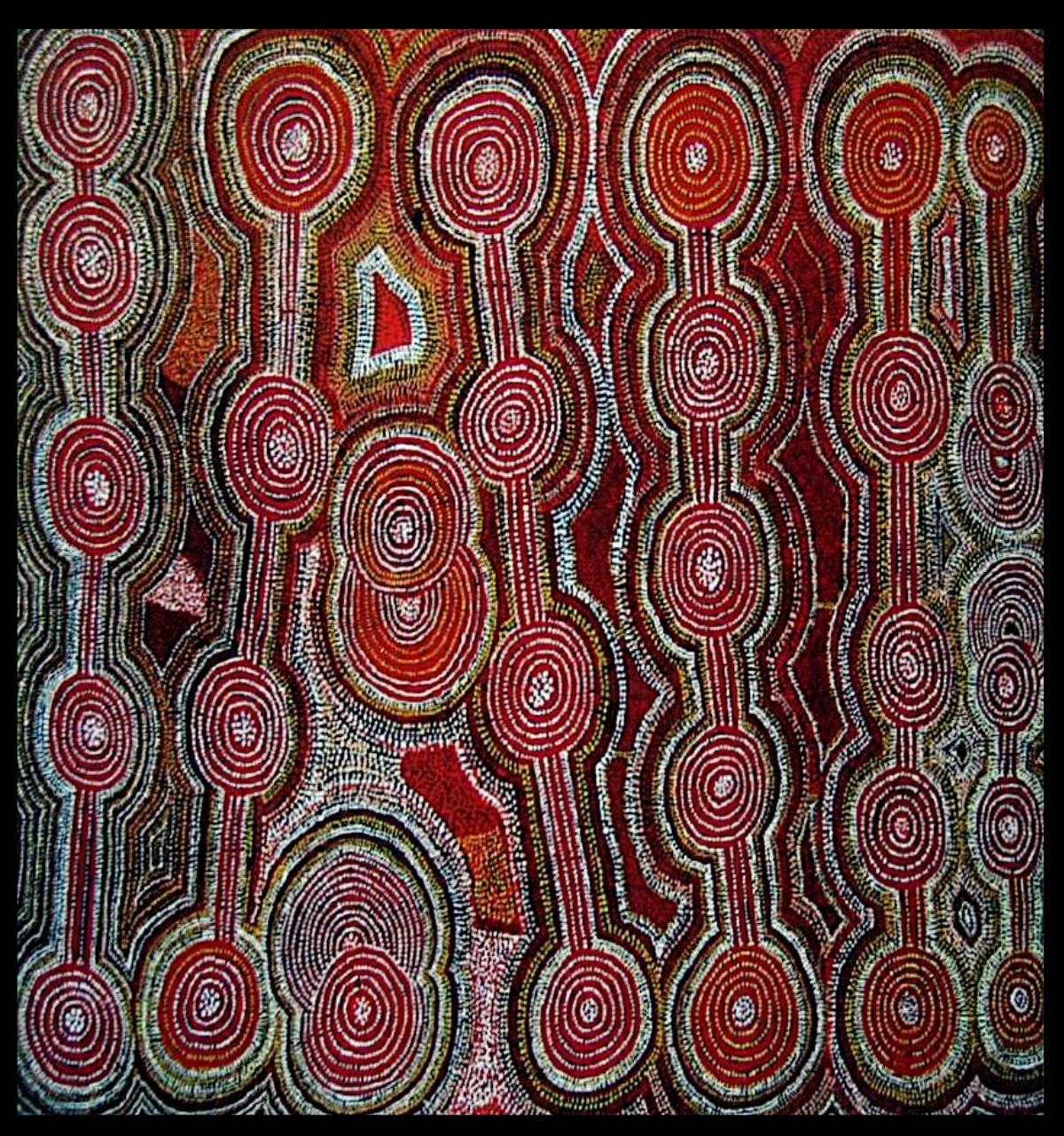
Tale of Two Women 1980
Synthetic polymer paint on canvas,
125.9 x 159 cm
Hammerprice: A$8,000
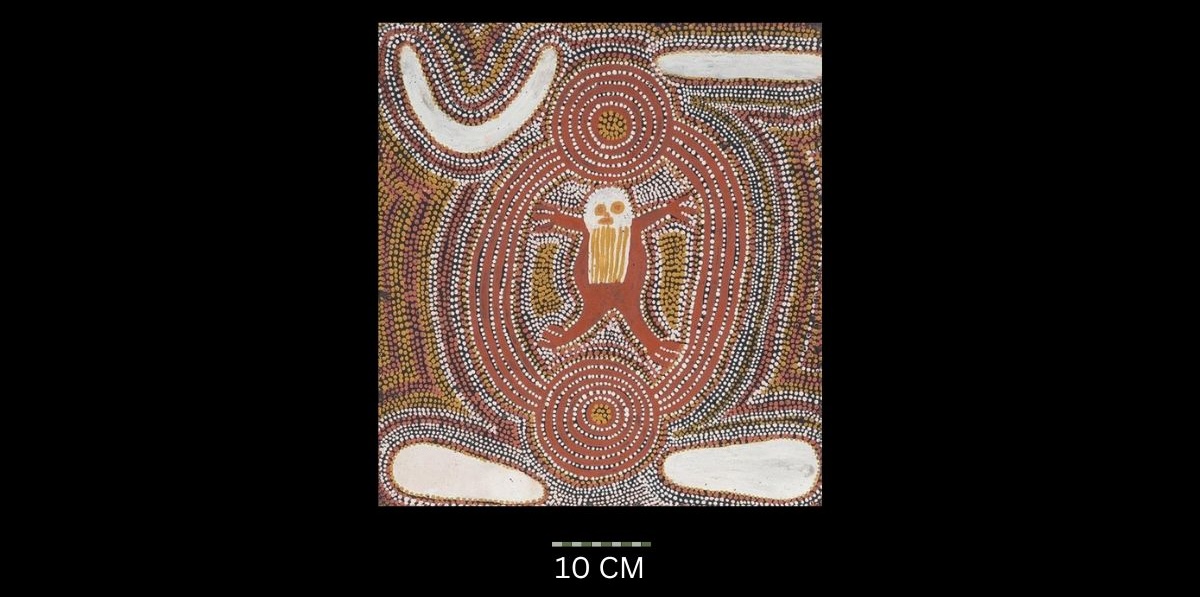
Pungalunga (Giant) 1980
Synthetic polymer paint on board,
48 x 44 cm
UNSOLD

Untitled 1981
Synthetic polymer paint on canvas, bears artist’s name ‘Watima’ [sic] on the reverse,
90 x 60 cm
Hammerprice: A$2600

Pangalanga (Big Giant) 1983
Synthetic polymer paint on canvas board, bears artist s name, title and place of execution on the reverse,
35.5 x 25.4 cm
Hammerprice: A$1000

Bandicoot Dreaming at Tjiturrunga 1985
Synthetic polymer paint on linen, inscribed verso with artist’s name, title, Papunya Tula Artists cat. no. CT851242, and Avant Galleries cat. no. 9,
92 x 122 cm
Hammerprice: A$14,000

Tjiturulnga 1984
Synthetic polymer paint on canvas board, bears artist’s name, Papunya Tula Catalogue number CT841036 and the recorders notes on the reverse,
50.5 x 40.5 cm
Hammerprice: A$1200

Untitled 1984
Synthetic polymer paint on canvas, inscribed verso with artist’s name and Papunya Tula Artists cat. no. CT840825,
121 x 76 cm
Hammerprice: A$6000

Ninu Bandicoot Dreaming, 1984
Synthetic polymer paint on board, inscribed verso Papunya Tula Artists cat. ‘CT841241’,
45 x 55 cm
Hammerprice: A$2000

Untitled – Travels of a Bandicoot 1985
Acrylic on canvas, ‘Property of Tula’ inscribed verso,
150 x 99 cm
Hammerprice: A$7,750

Warlungurru 1985
Synthetic polymer on canvas, numbered on reverse ‘CT85 1059’,
120 x 120 cm
Hammerprice: A$6000

Untitled (Hills at Walungurru), 1986
Synthetic polymer paint on canvas, papunya Tula Artists cat no. CT 860340,
92 x 122 cm
Hammerprice: A$2400

Untitled (Tingari Painting), 1987
Synthetic polymer paint on linen, bears inscription verso: artist’s name, ‘Watuma’ [sic.] and Papunya Tula Artists cat. CT870944,
152.5 x 91.5 cm
Hammerprice: A$8,000

Kungka Kutjarra (Two Women Dreaming) 1987
Synthetic polymer paint on canvas, bears Papunya Tula Artists catalogue number CT870825 on the reverse,
182 x 122 cm
Hammerprice: A$7000

Emu and Turkey Dreaming at the Site of Unkunija 1988
Synthetic polymer paint on canvas,
61.5 x 91.5 cm
Hammerprice: A$2000

An Audience with the Queen 1989
Synthetic polymer paint on linen, bears artist’s name and Papunya Tula catalogue number CT890660,
121 x 121 cm
Hammerprice: A$60,000

Tingari at Nyirripi, 1990
Synthetic polymer paint on board,
153 x 34.5 cm
Hammerprice: A$20,000

Untitled (Dreaming at Tjitarulnga) (1990)
Synthetic polymer paint on composition board, bears Papunya Tula Artists cat. no. CT901219 verso,
122 x 33 cm
Hammerprice: A$2800

Untitled (Dreaming at Tjitarulnga) (1990)
Synthetic polymer paint on linen, bears Papunya Tula Artists cat. no. CT901054 verso,
90 x 30 cm
Hammerprice: A$2800

Tingari Cycle and Kunia
Acrylic on linen,
60 x 90 cm
Hammerprice: A$700

Untitled 2000
Acrylic on linen, inscribed with artist’s name and Papunya Tula Artists’ cat. no. ‘CW 0011217’ verso,
121 x 91 cm
Hammerprice: A$320

Untitled
Synthetic polymer paint on linen, with Papunya Tula Artists number CW0102140 on the reverse,
91.5 x 61 cm
Hammerprice: A$1800

Ngarru, 2002
Synthetic polymer paint on linen,
61 x 55 cm
Hammerprice: A$400

Untitled 2003
Acrylic on linen, inscribed with Papunya Tula Artists’ cat. no. ‘CW0304179’ verso,
122 x 153 cm
Hammerprice: A$600

Untitled 2003
Acrylic on linen, inscribed with Papunya Tula Artists’ cat. no. ‘CW0311007’ verso,
153 x 92 cm
Hammerprice: A$500

Ngarru (Tingari), 2004
Acrylic on linen, accompanied by a certificate of authenticity from Papunya Tula Artists. Illustrated: Johnson, V., Lives of the Papunya Tula Artists, LAD Press, Alice Springs, 2008, p. 256. Illustrated: Johnson, V., Lives of the Papunya Tula Artists, LAD Press, Alice Springs, 2008, p. 256,
153 x 61 cm
Hammerprice: A$1000
All images in this article are for educational purposes only.
This site may contain copyrighted material the use of which was not specified by the copyright owner.
All images are the copyright of the Artists estate and the consignee of the artworks sold.
Charlie Tawara Tjungurrayi references
Papunya: A place made after the Story
Other Articles that show values achieved by other Papunya artists
Long Jack Phillipus Tjakamarra Artworks
Aboriginal Artwork Values
Selling at Auction
Selling artwork at auction can sometimes yield favorable results, particularly when multiple interested bidders compete, potentially driving up the final sale price. This environment can occasionally lead to inexperienced buyers bidding more than they originally intended, which can benefit the seller in competitive situations.
In the niche market of Aboriginal art however this is the exception with mosy potential bidders being knowledgable and well researched
Downside to Selling at Auction
Auctions come with inherent limitations. One significant drawback is that they do not achieve the full market potential of an artwork. For instance, if the most motivated buyer values a piece at $10,000 but is aware of a 30% buyer’s premium, they may only be willing to place a maximum bid of $7,000. Meanwhile, the second most motivated buyer who values the work at $6,000 may only bid up to $4,200. As a result, bidding would likely stop at $4,200, and the winning bid might be only one bid higher, say $4,300. After deducting seller’s fees (10%-29%), the final amount received by the seller will be less than $3,900—far below the artwork’s perceived value.
Another risk associated with auctions is limited reach. Potential buyers who may have been willing to pay significantly more might simply not be aware of the auction, not have the money at the time or unable to participate at the scheduled time. This can result in missed opportunities and lower-than-expected sale outcomes.
This dynamic explains why many art dealers are able to purchase artworks at auction and resell them privately at a profit. Their ability to match artworks with motivated collectors, often through targeted private outreach, allows them to capitalize on the limitations of the auction model.
Private Treaty Sales
An alternative to auction is selling through private treaty. This method involves engaging a dealer to offer the artwork directly to known collectors who collect or have a strong interest in a particular artist or genre. The sale is conducted at price agreed buy the dealer and seller, allowing for a more targeted and lucrative transaction.
One key advantage of private treaty sales is flexibility. If the dealer is unable to secure a buyer through private channels, the artwork can still be offered at auction later. This approach often ensures better control over the sales process and often result in a more favorable outcome for the seller, especially when maximizing value is the priority.
I specialise in private treaty sales and if you have a Charlie Tarawa artwork and you would like to know what I think it could be sold for, please send me an image dimensions and provenance.
All images in this article are for educational purposes only.
This site may contain copyrighted material the use of which was not specified by the copyright owner.















